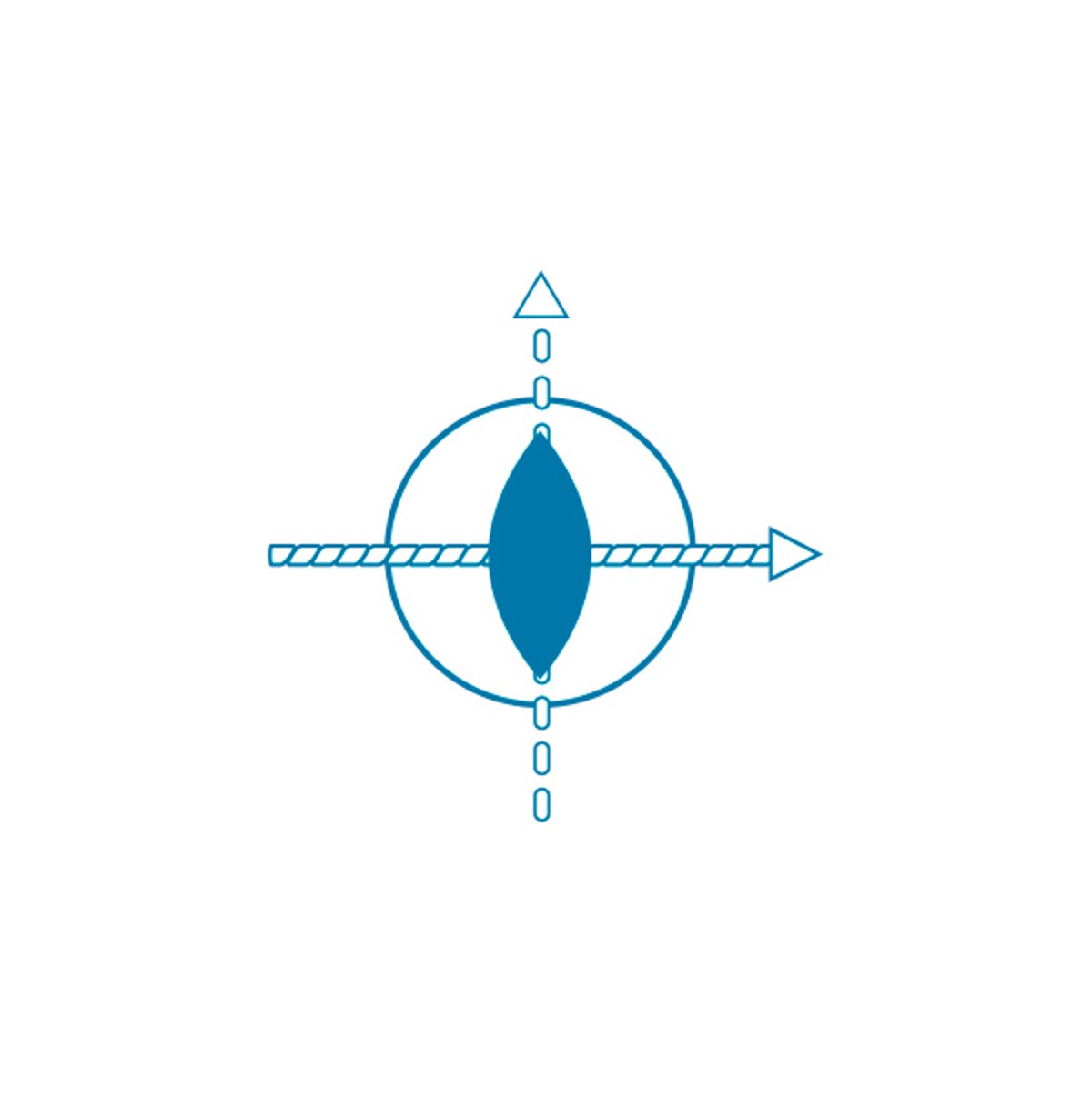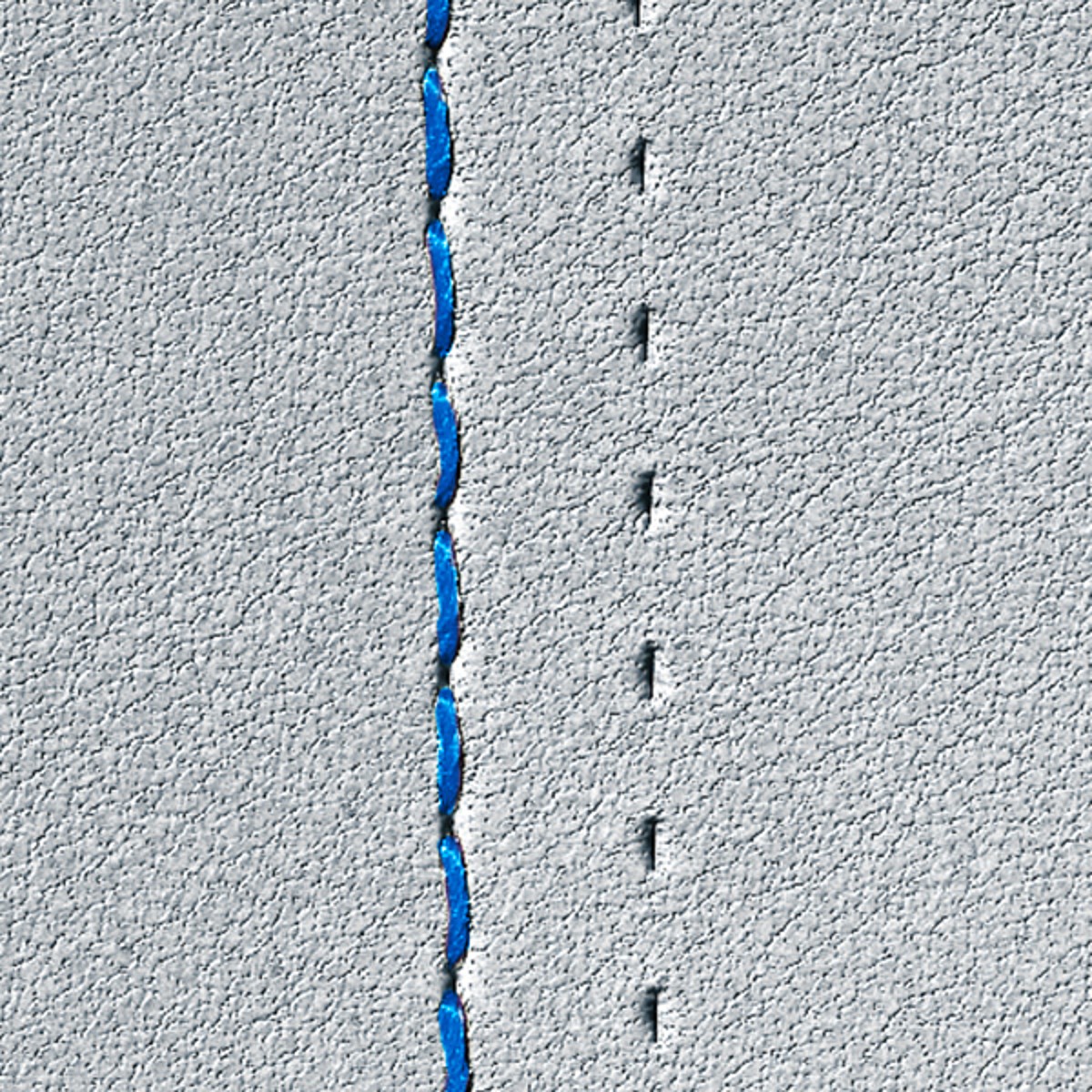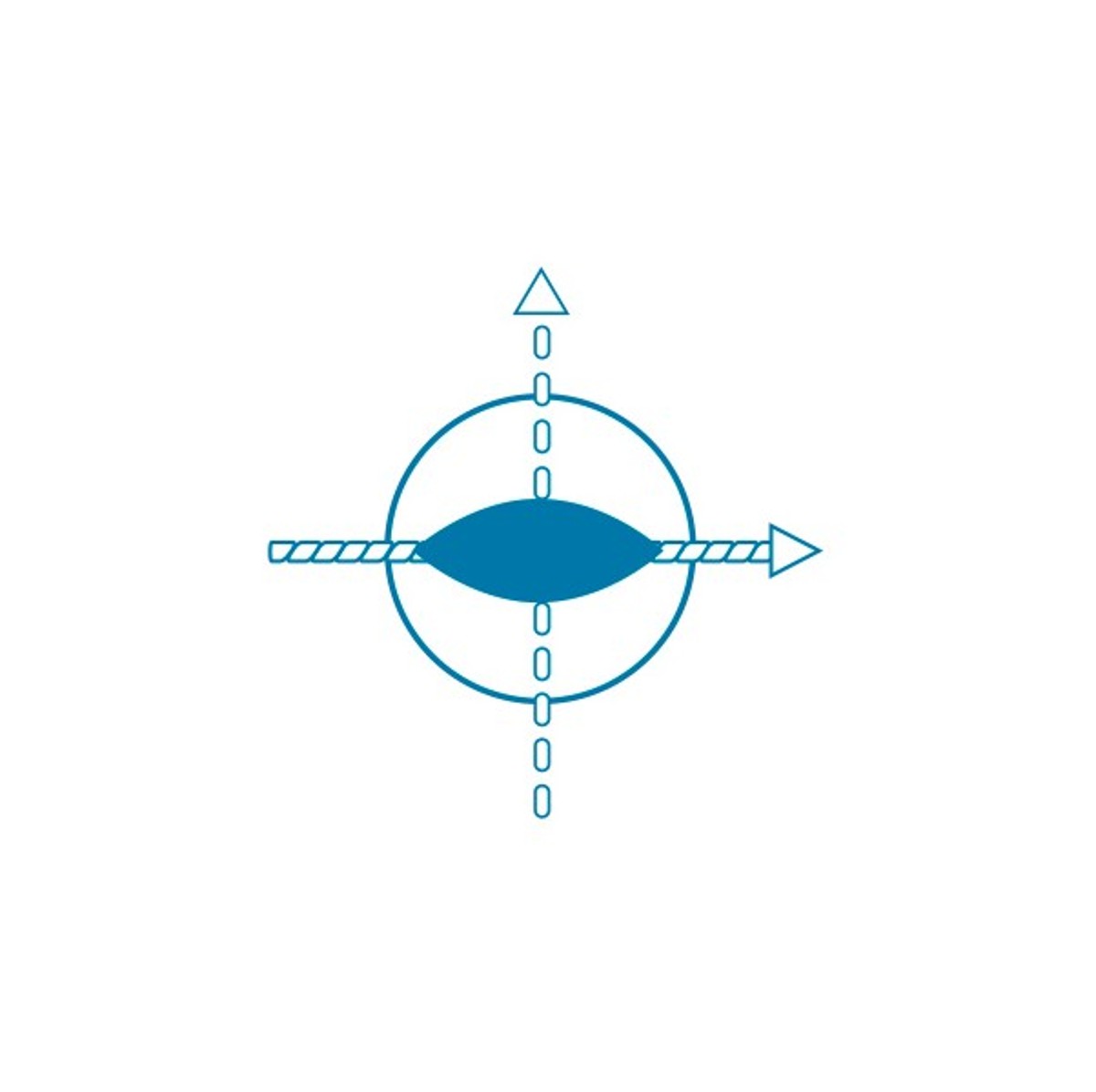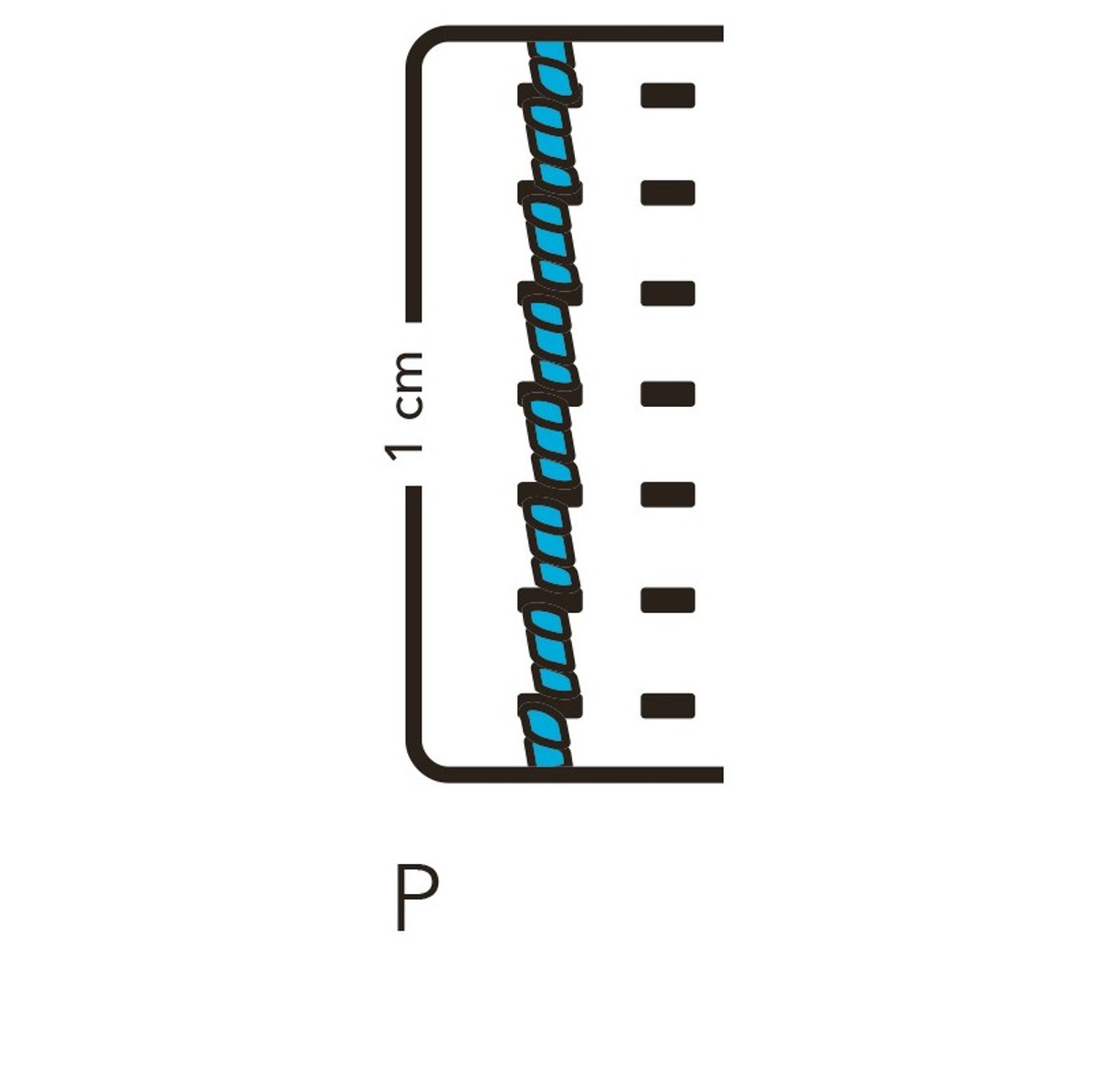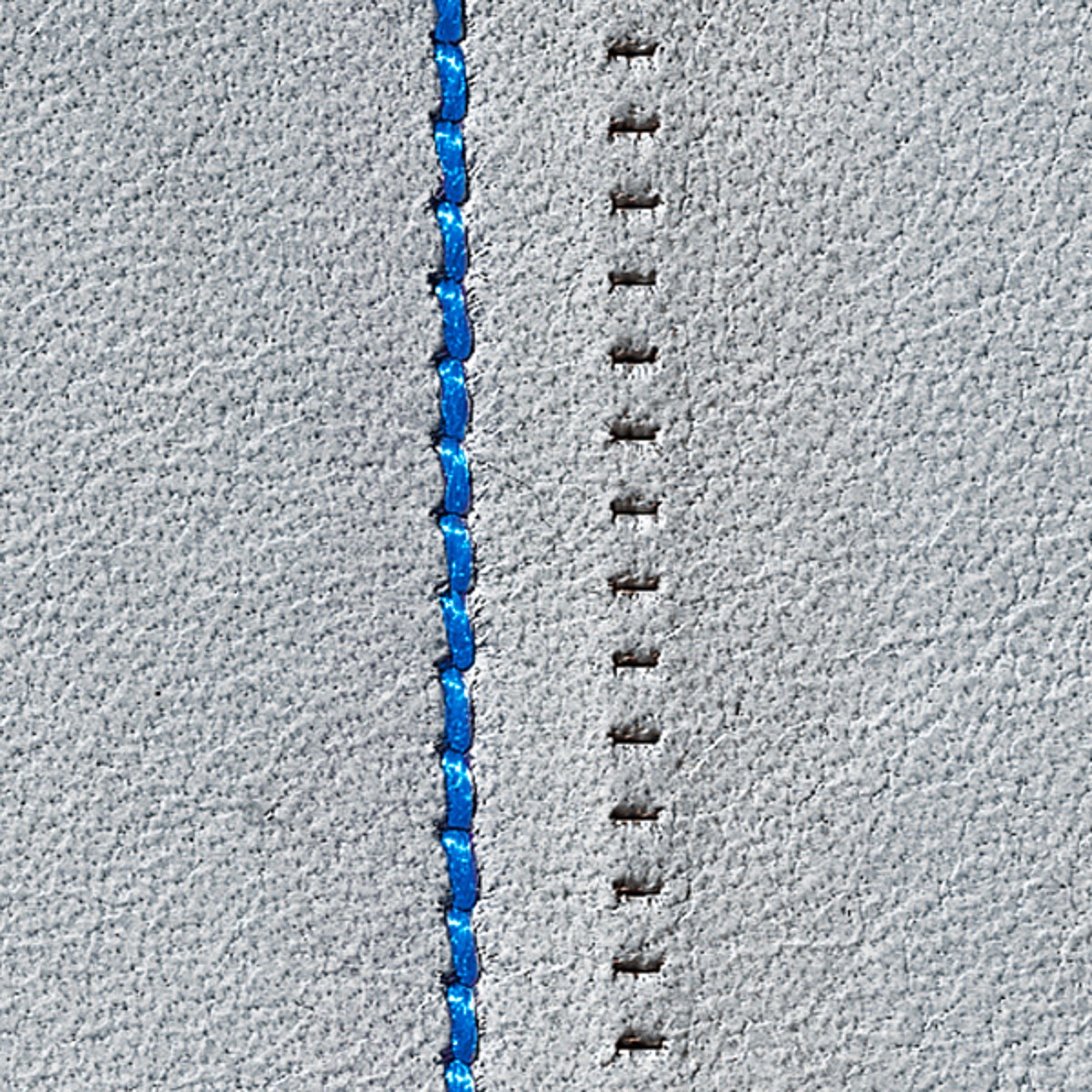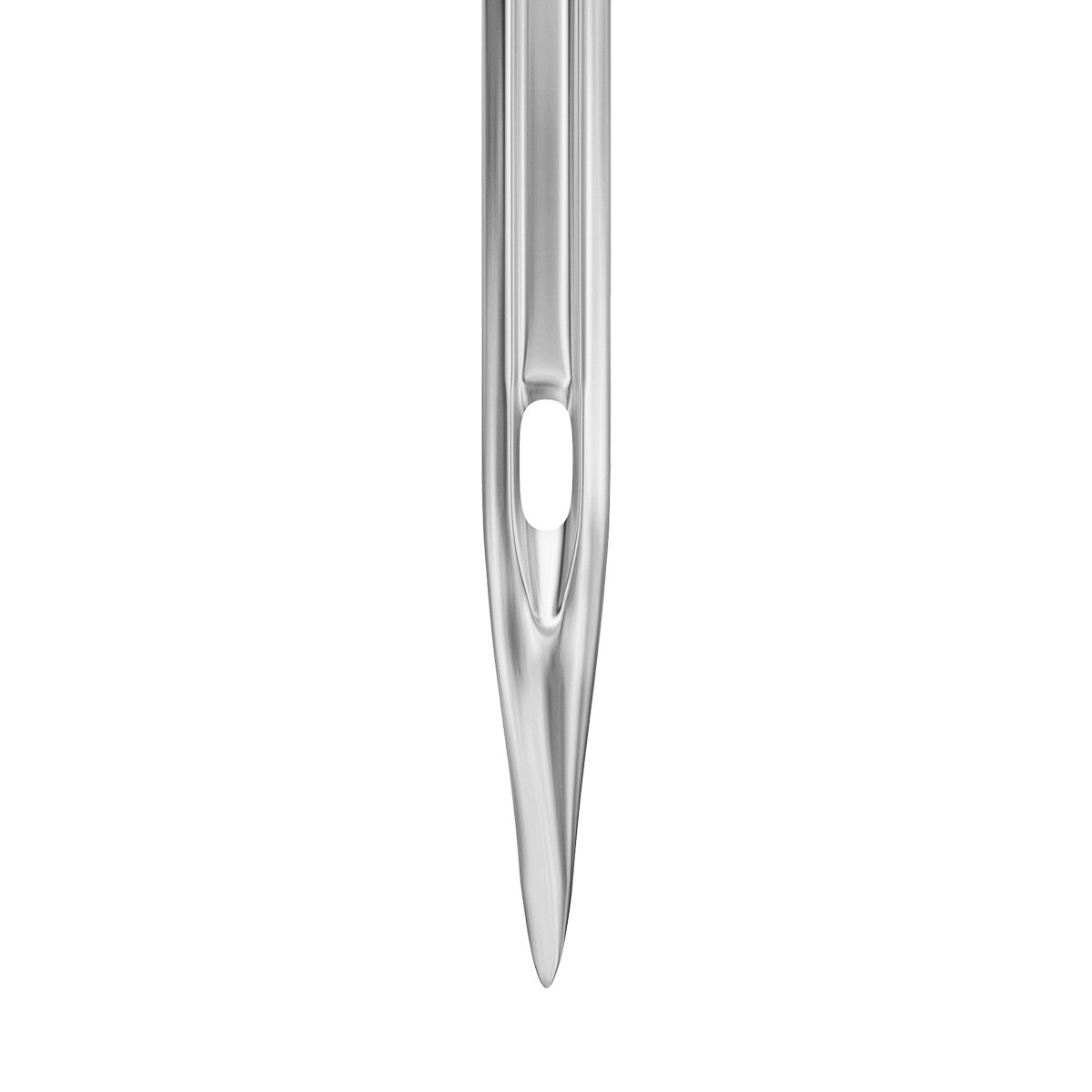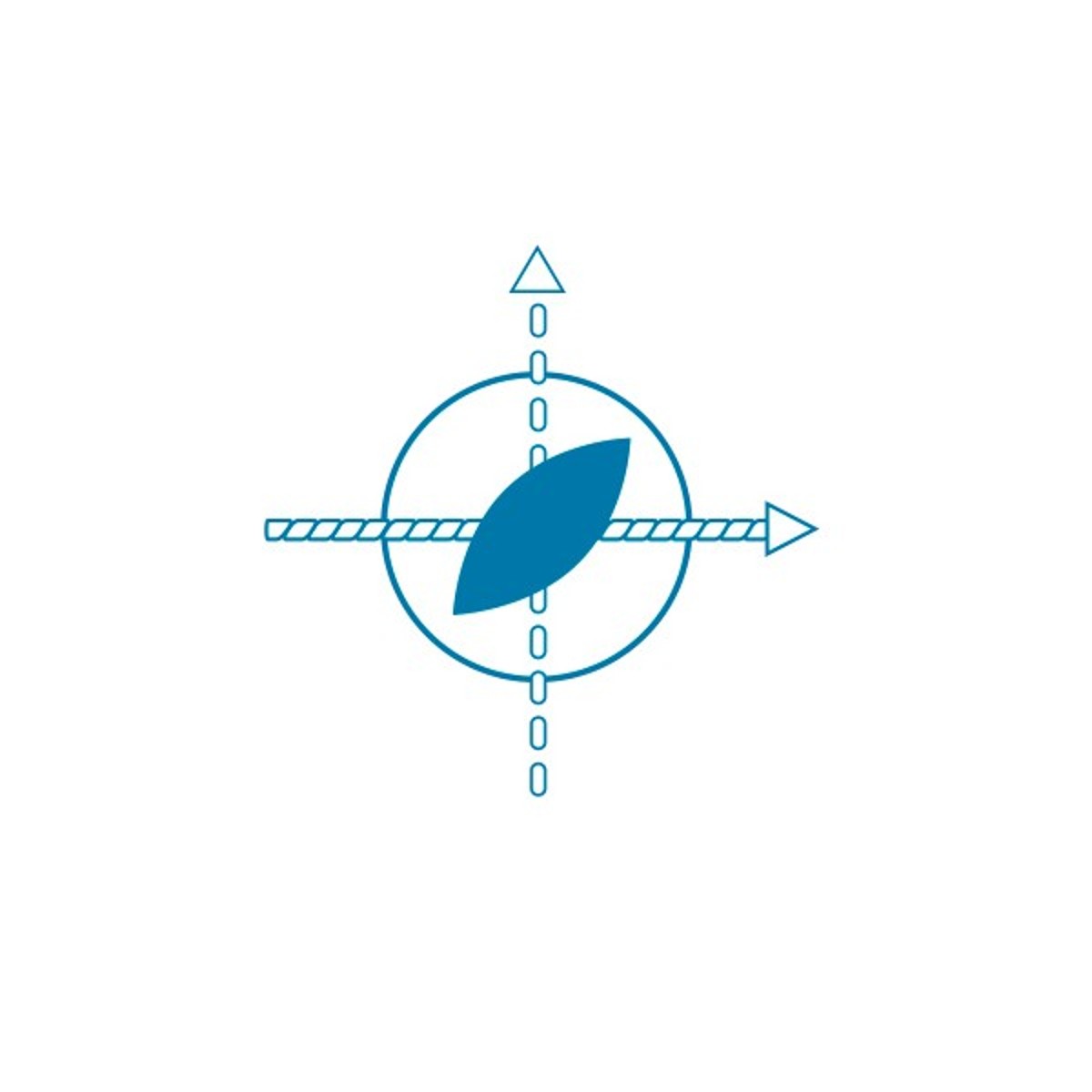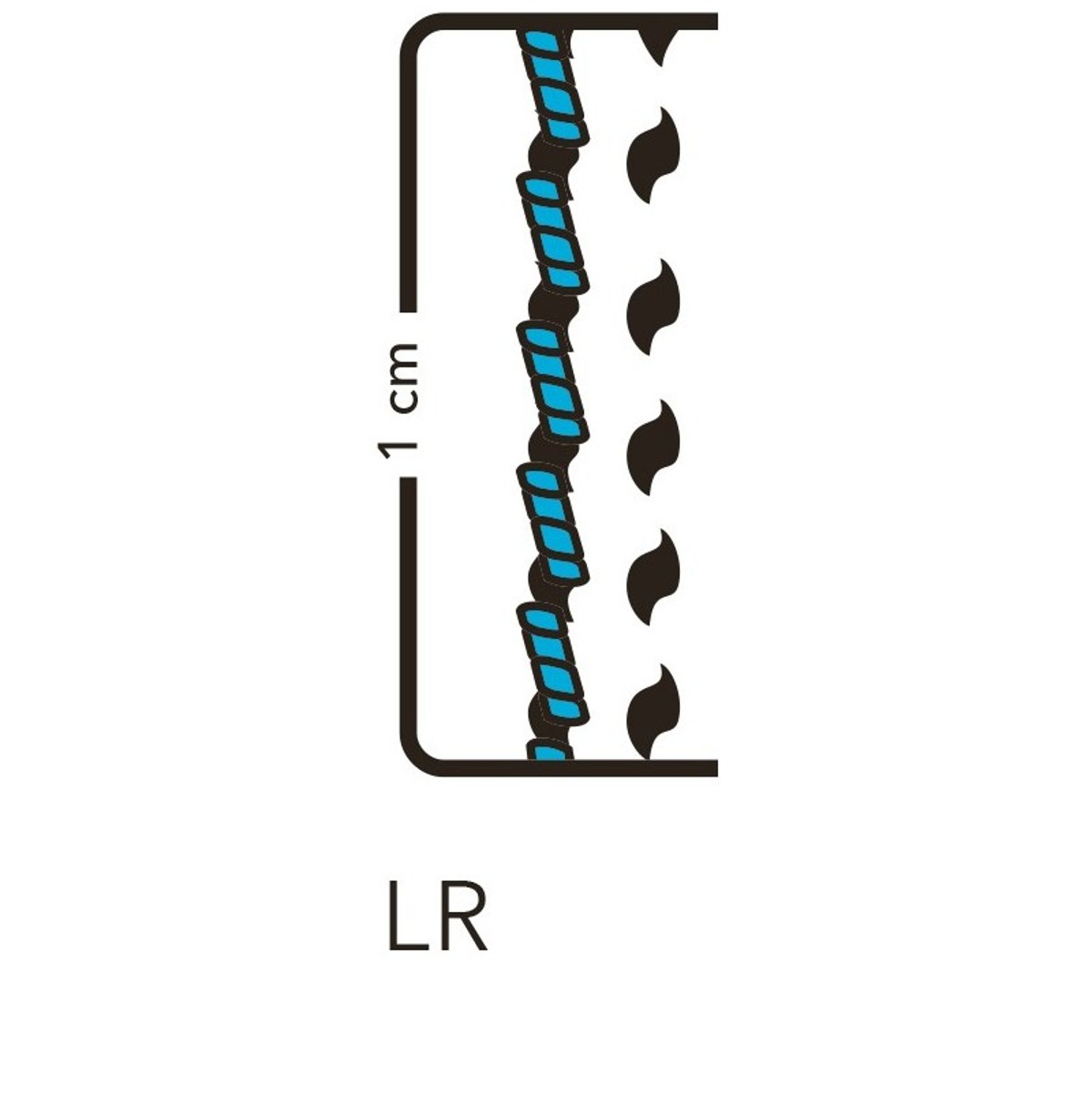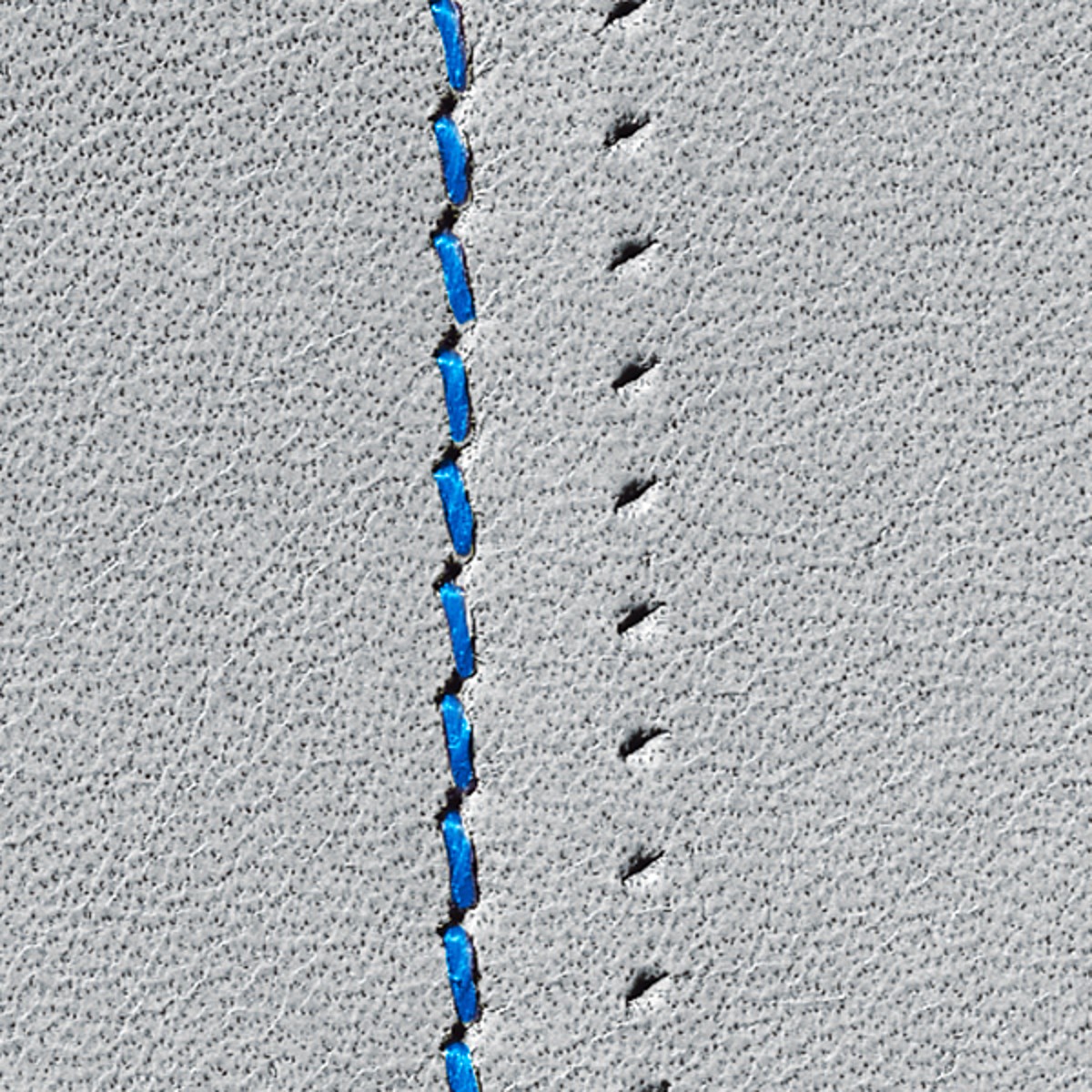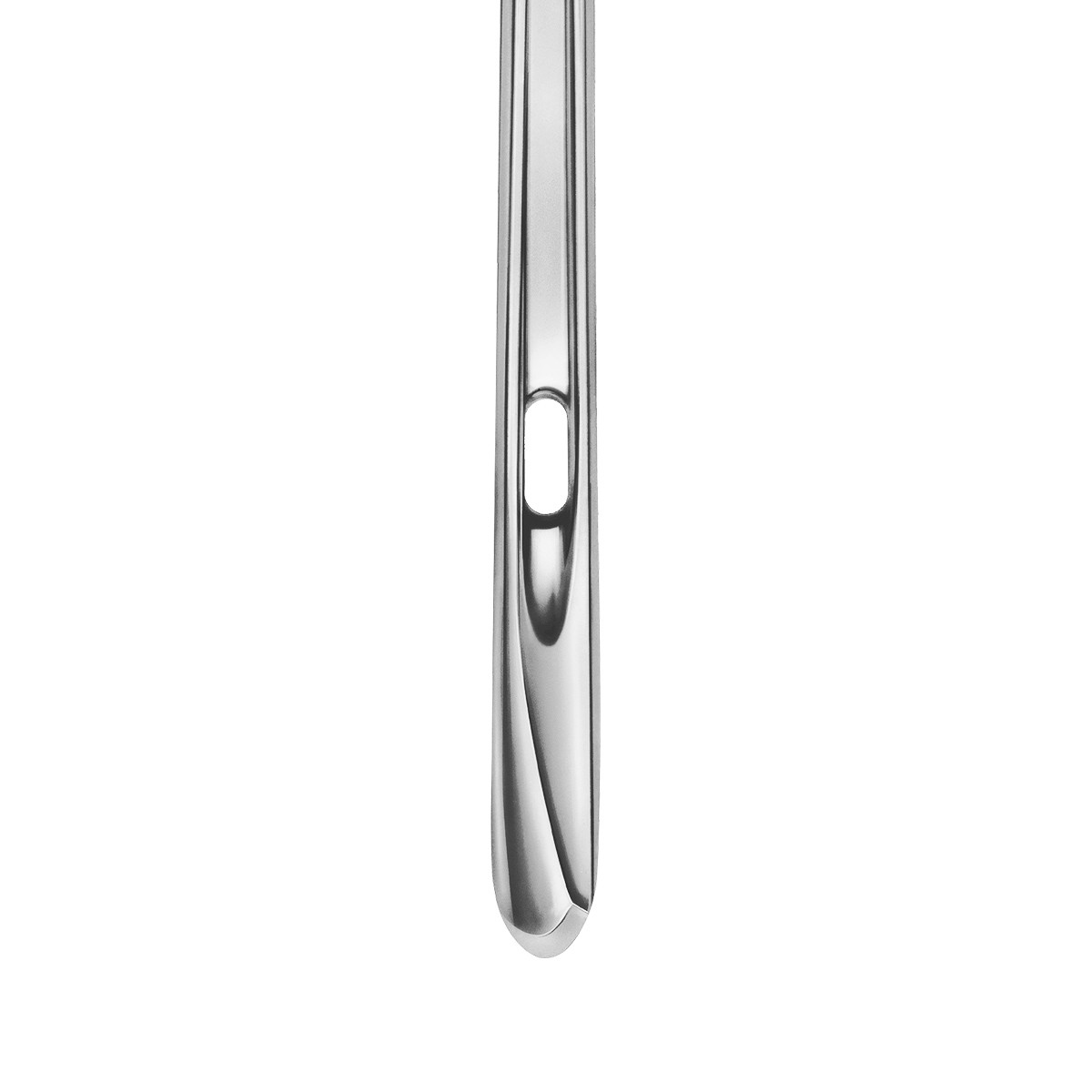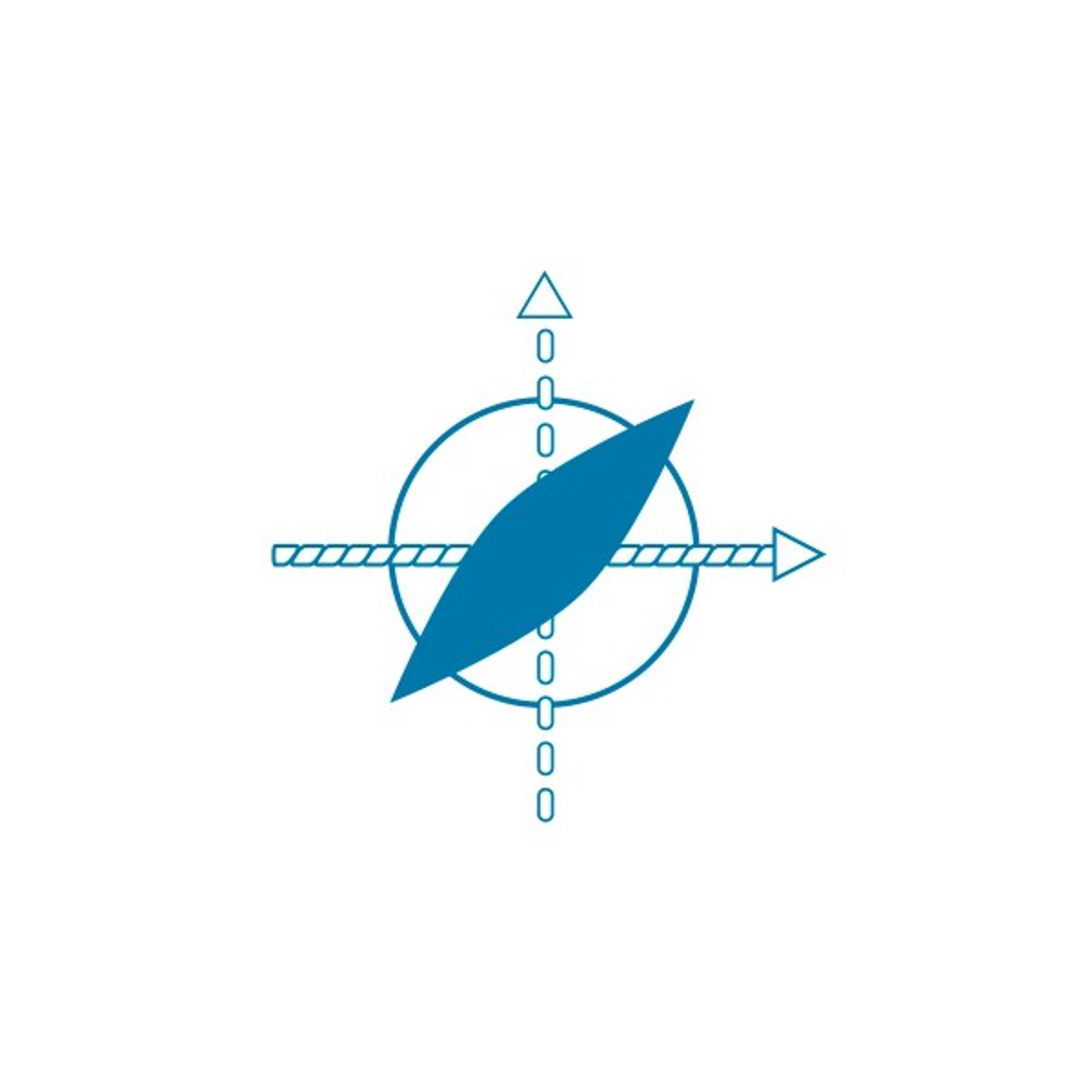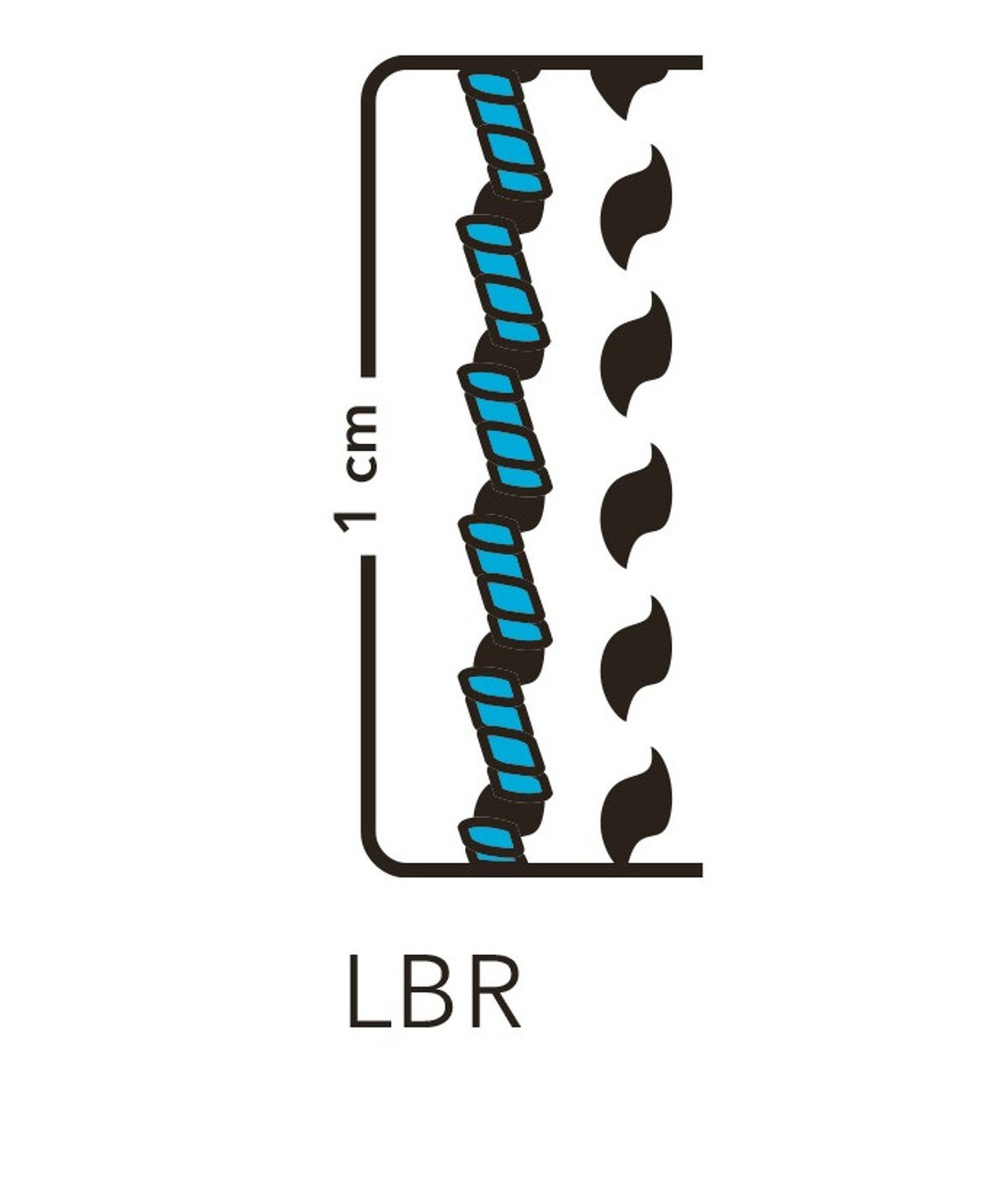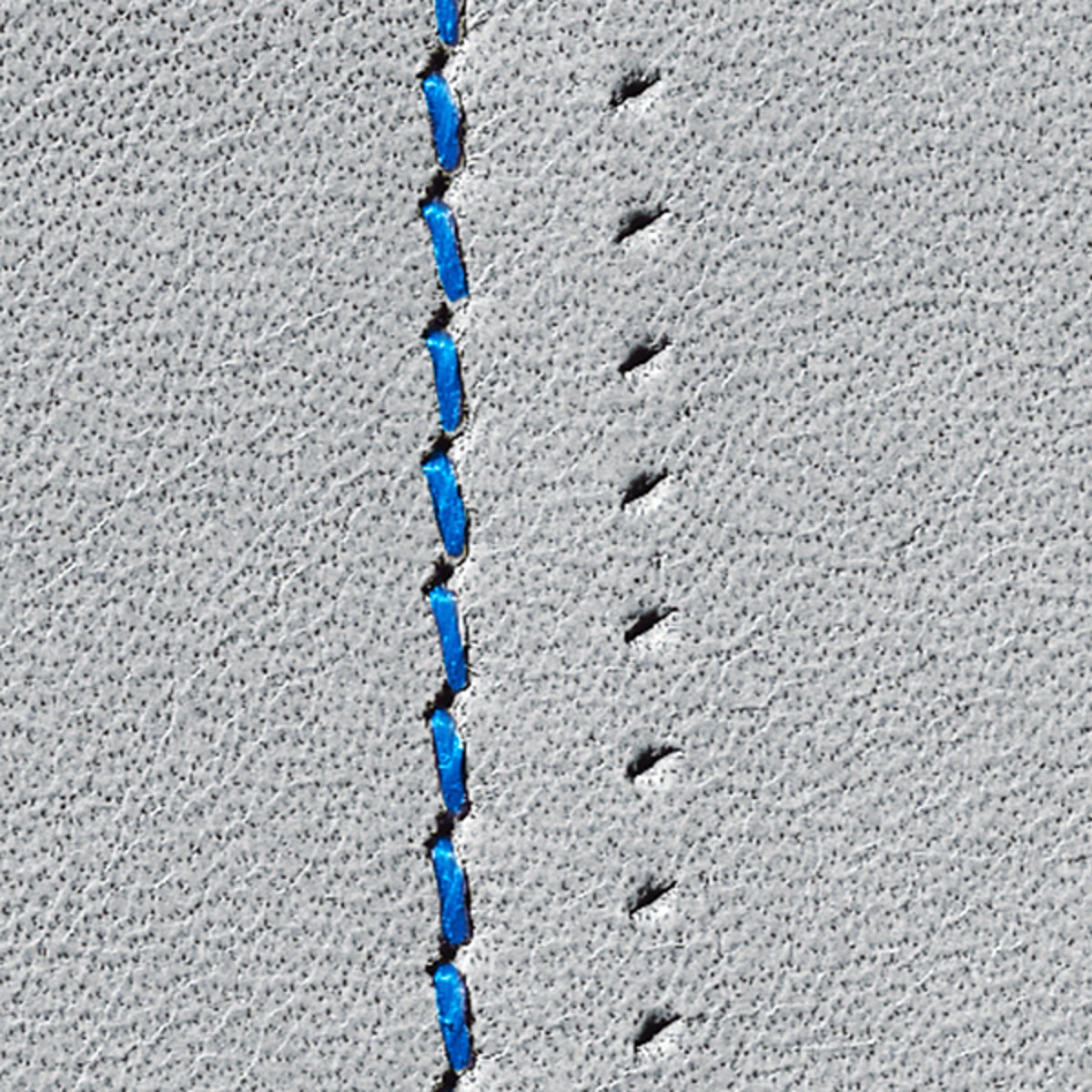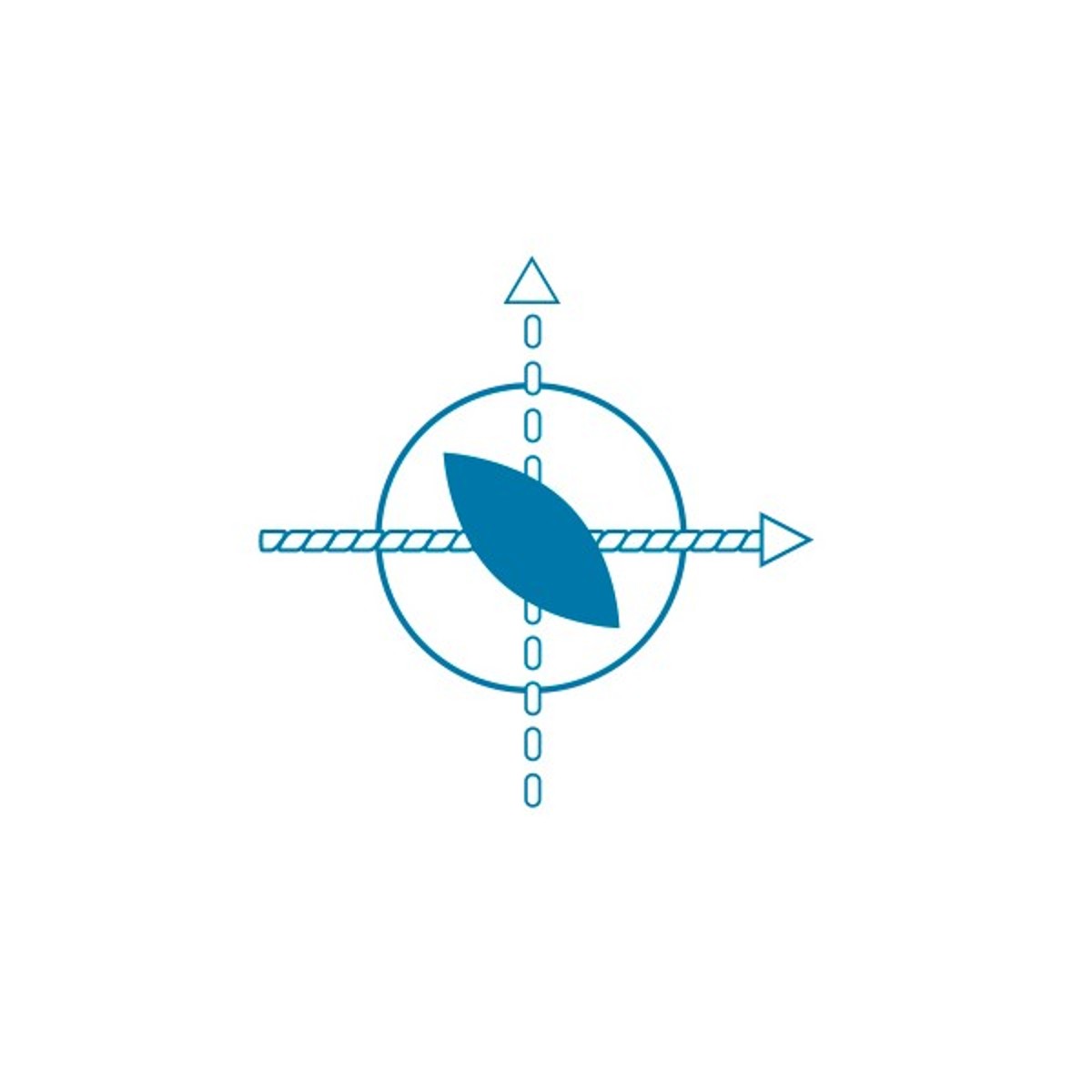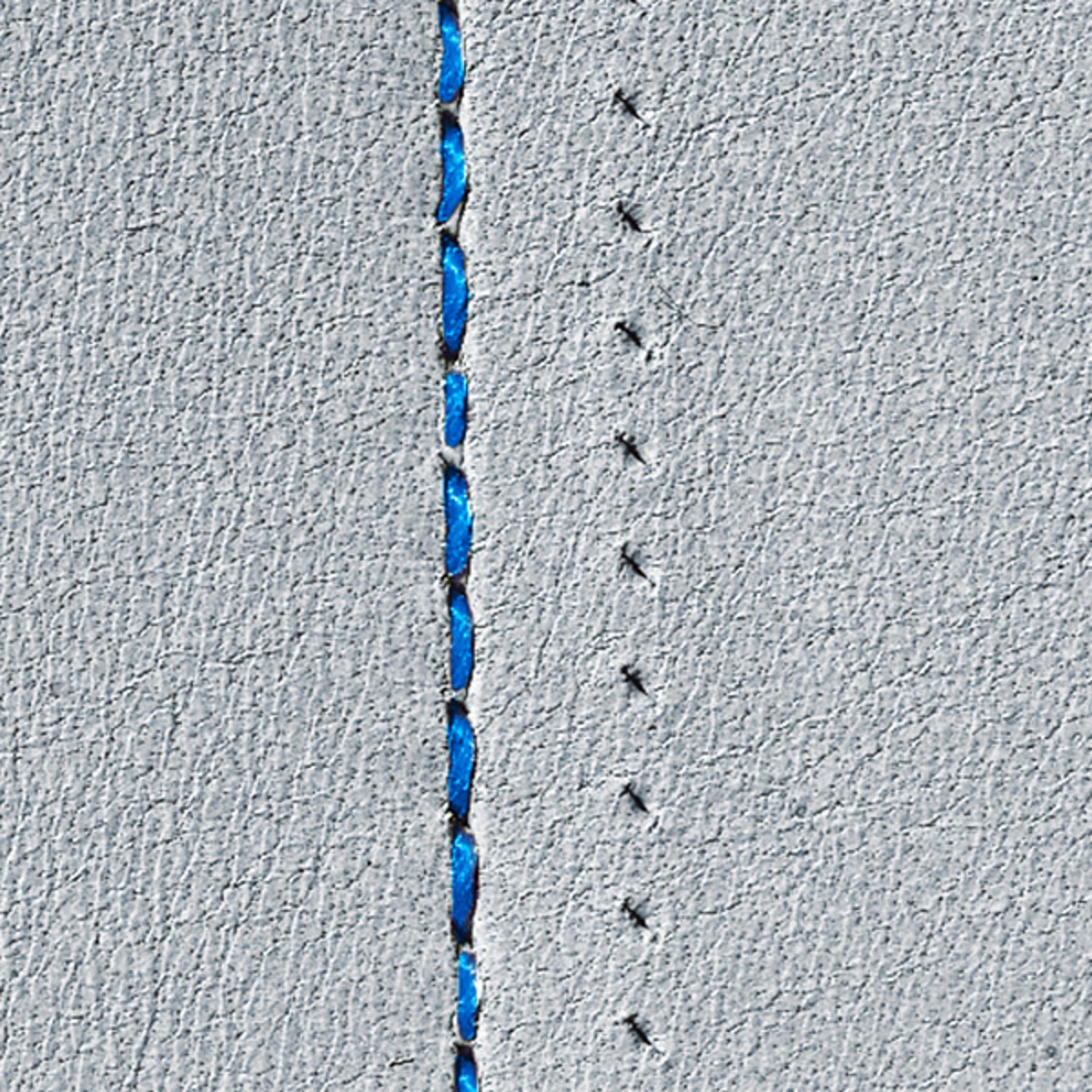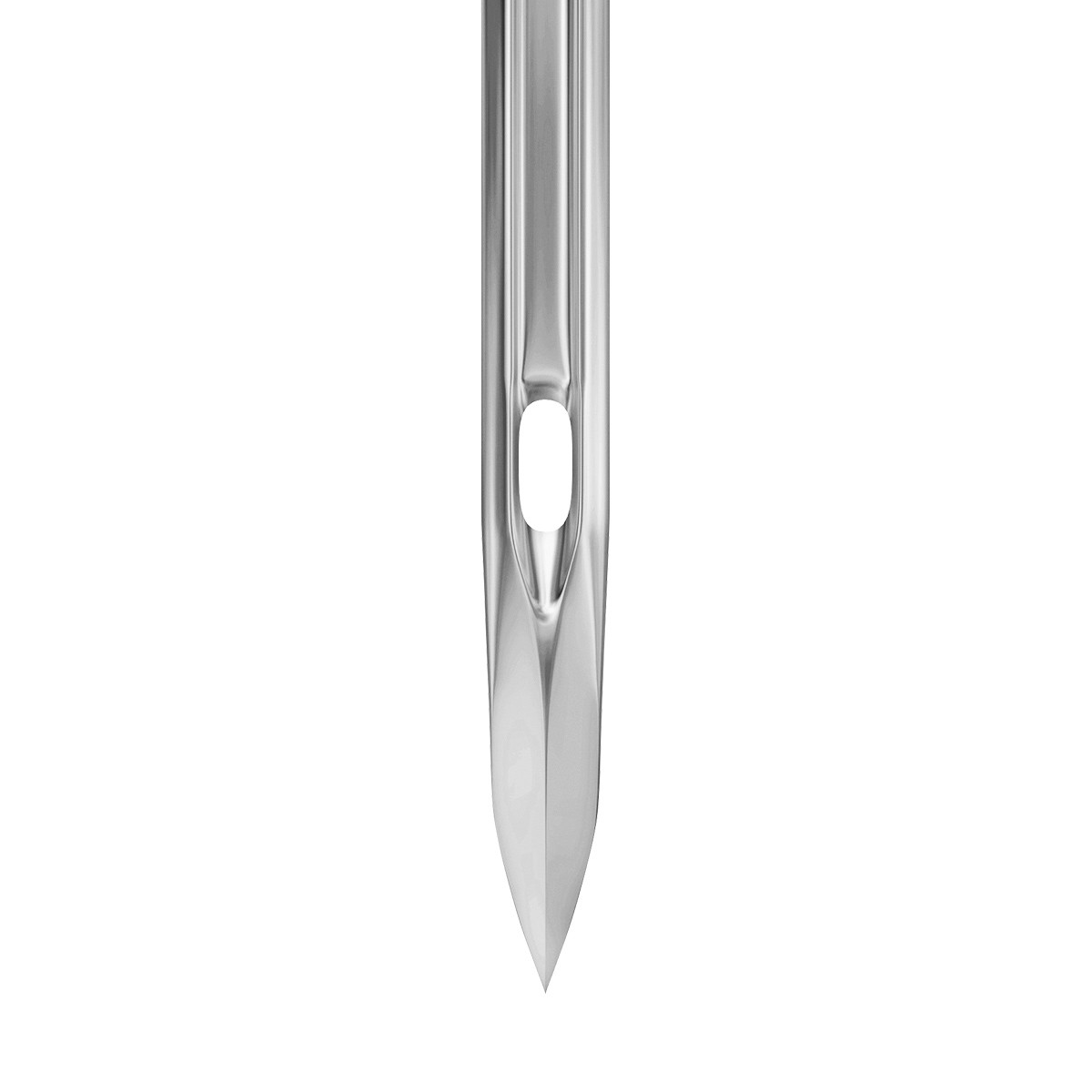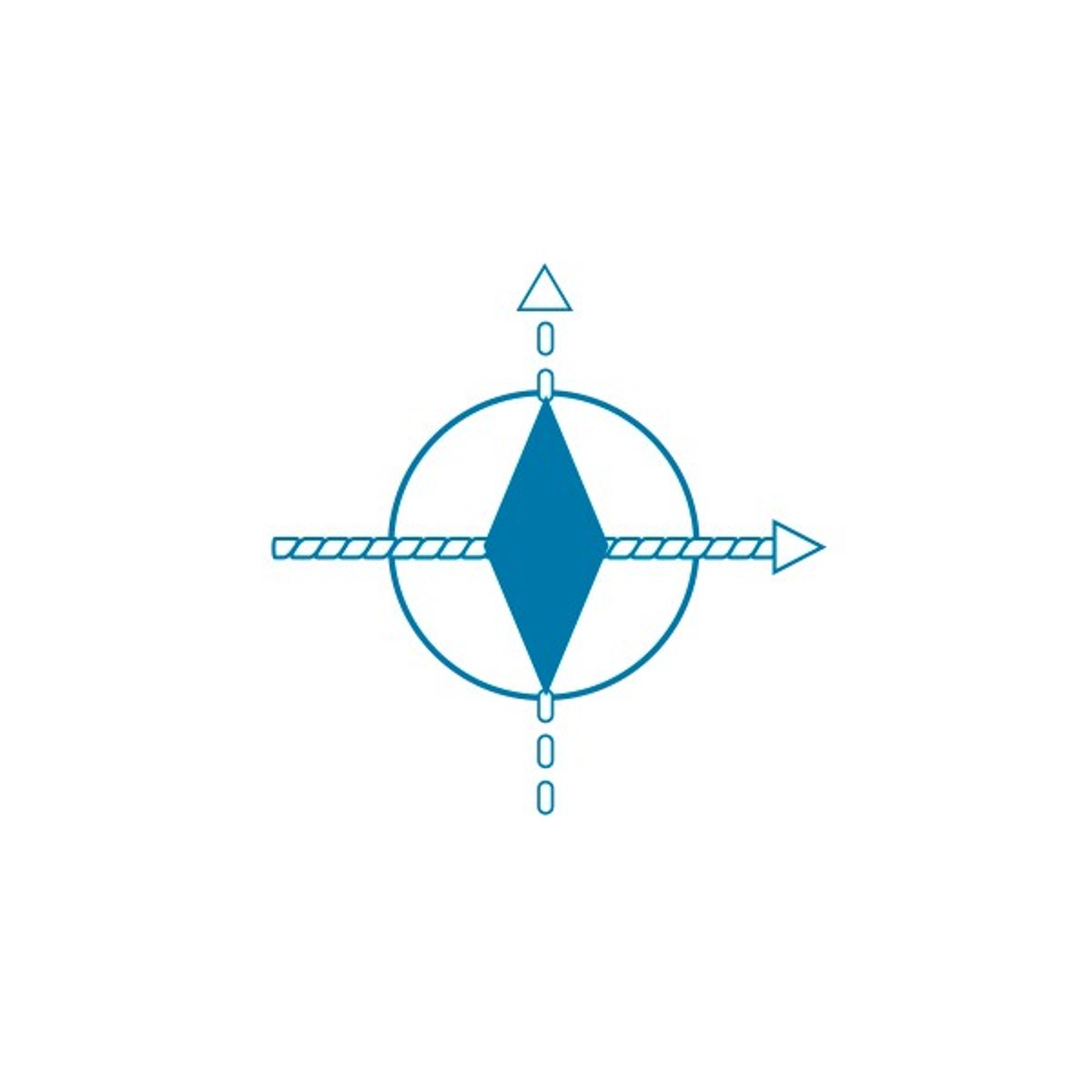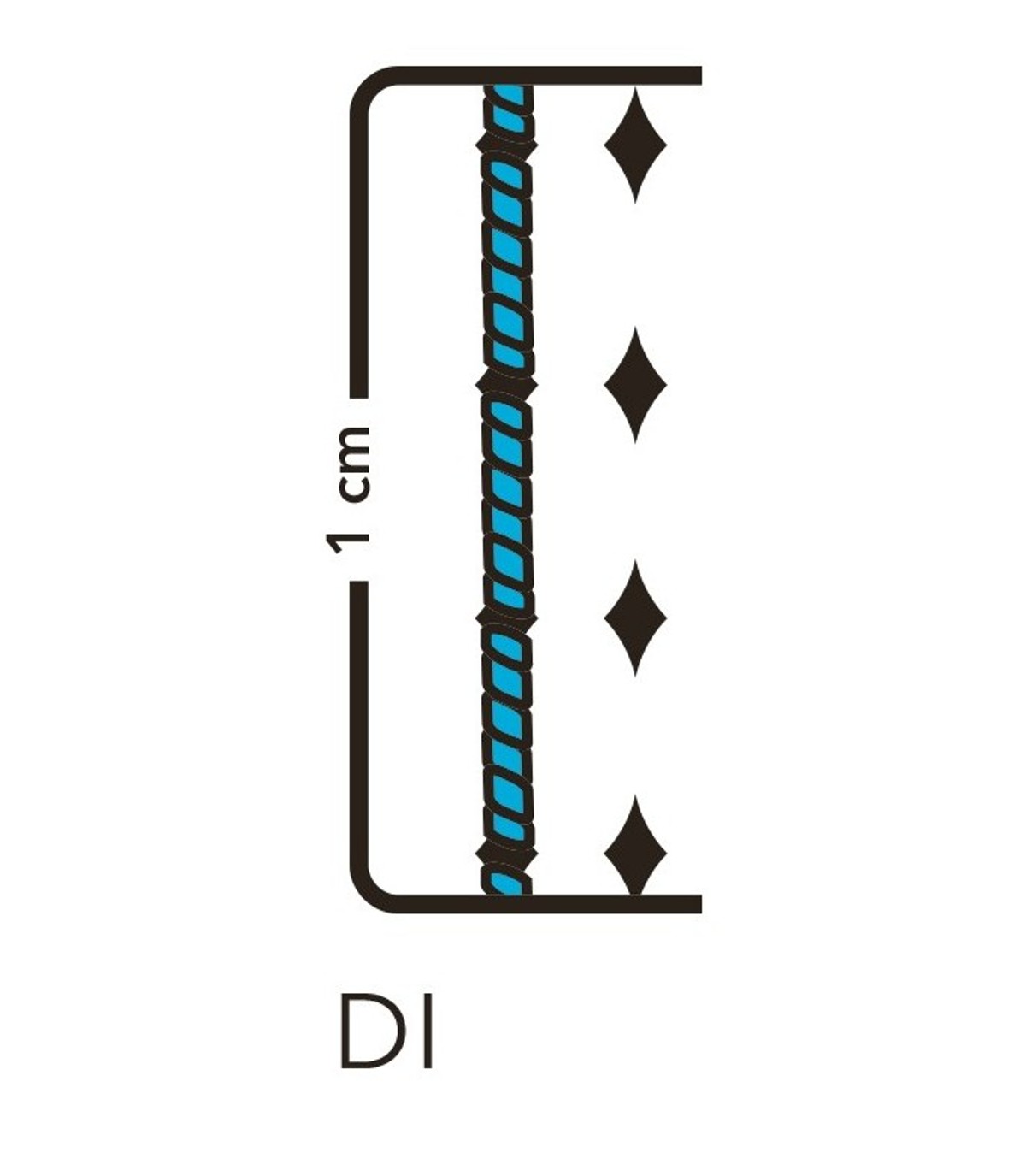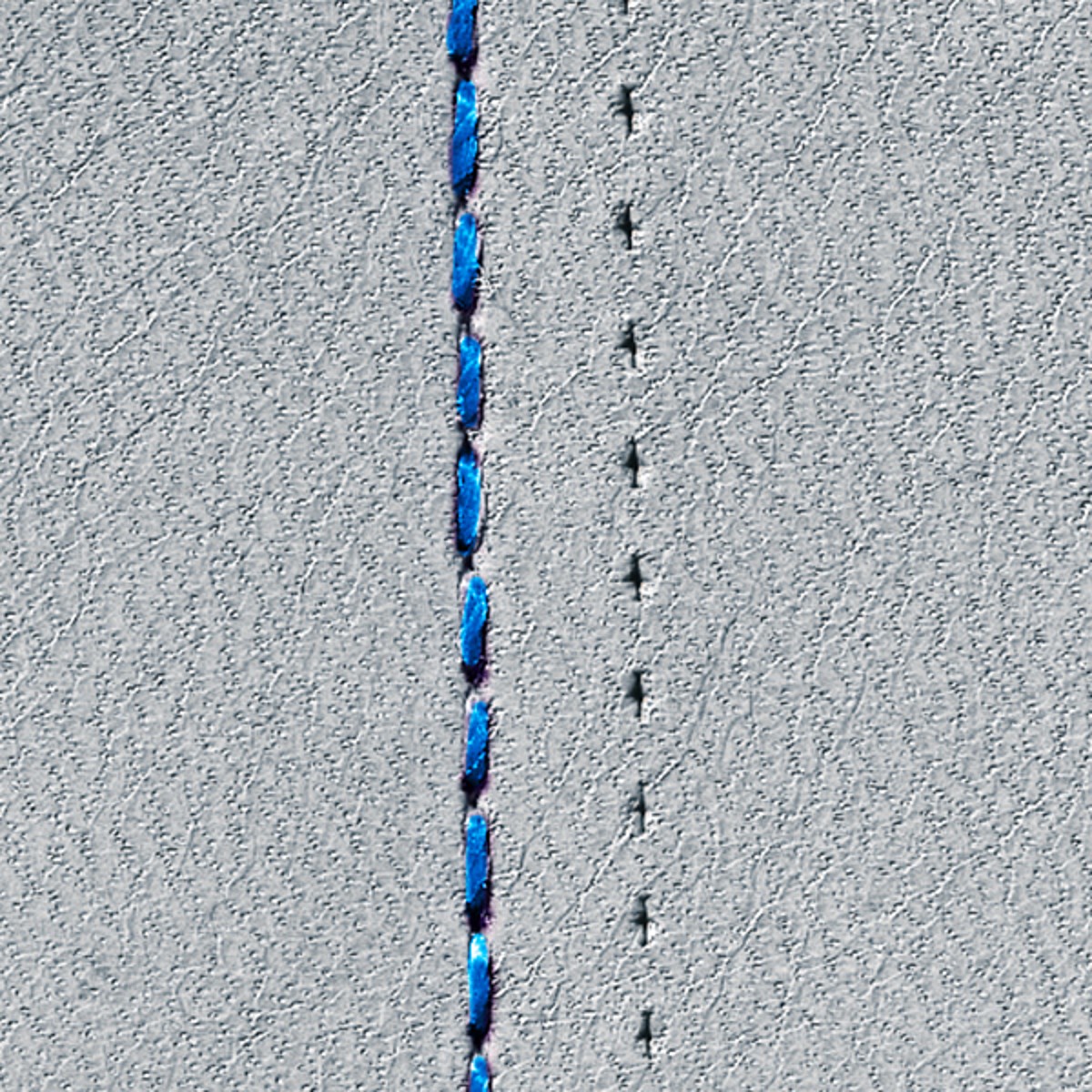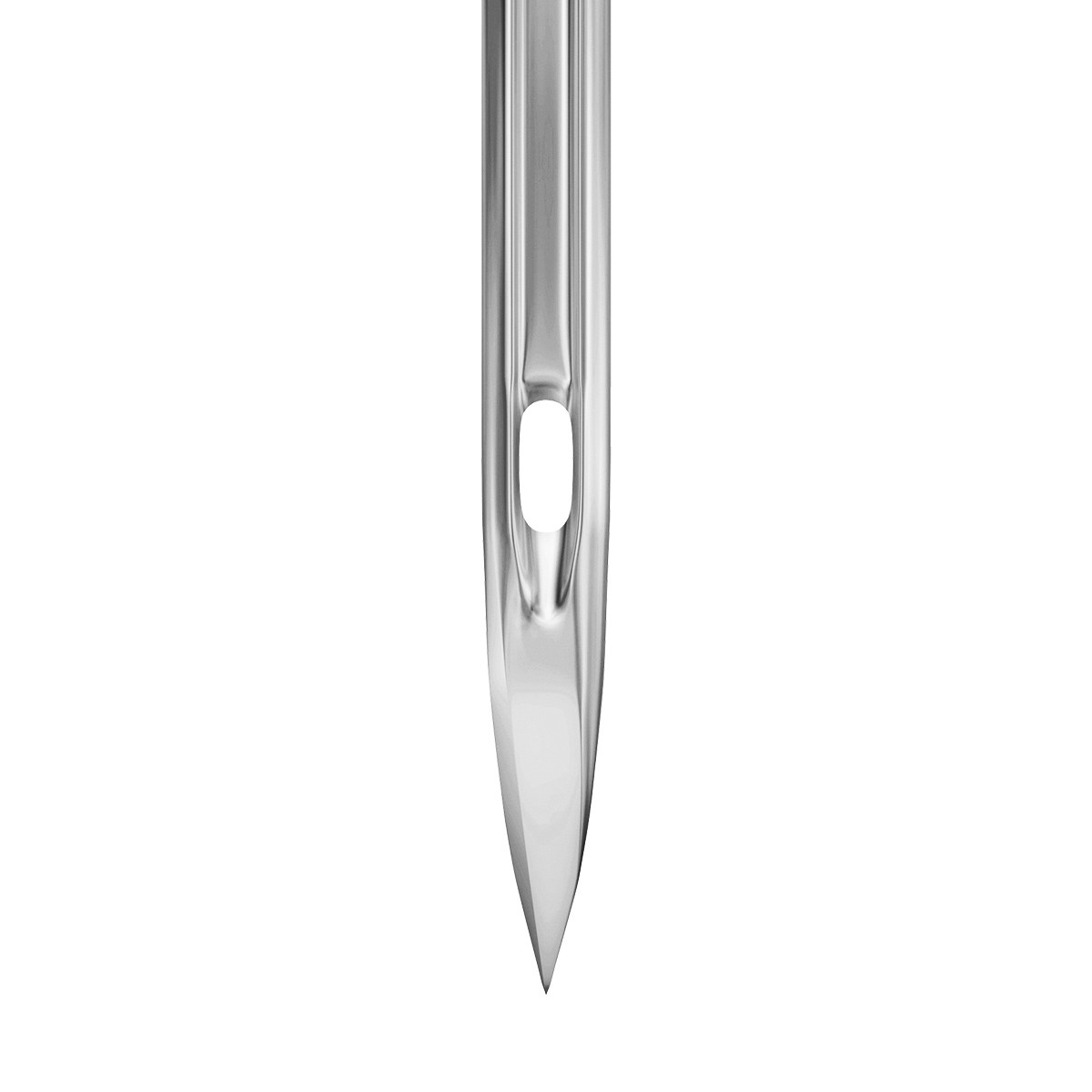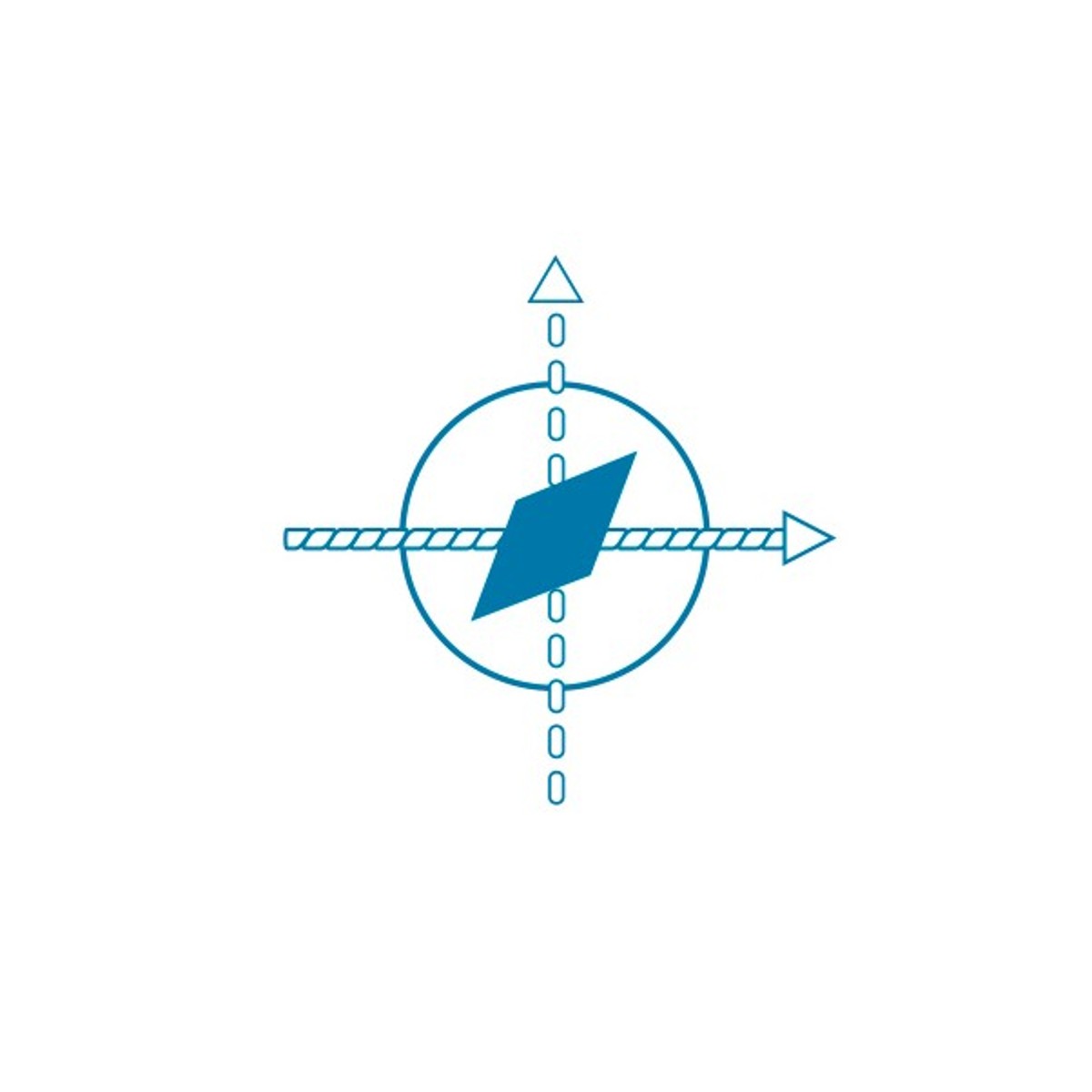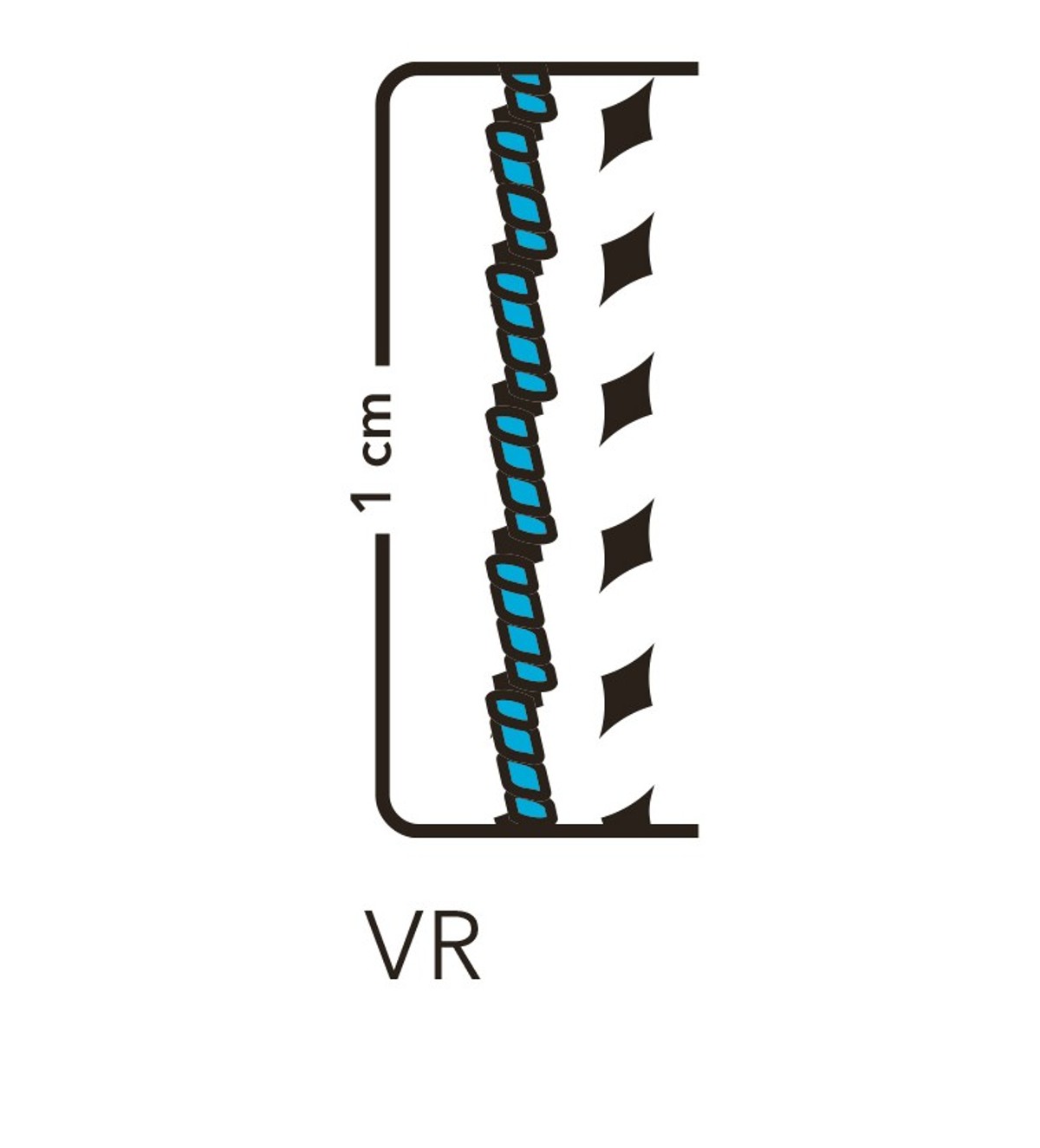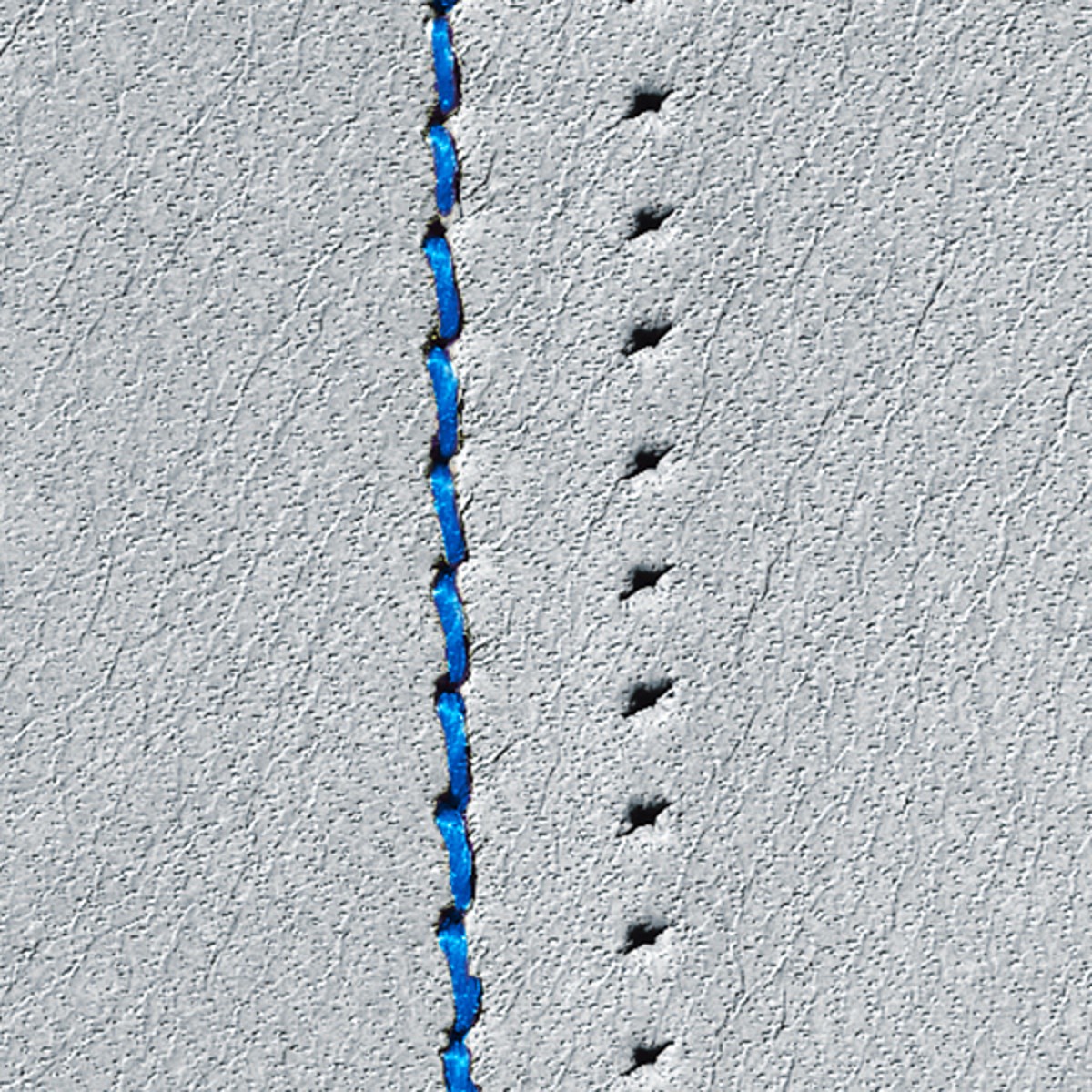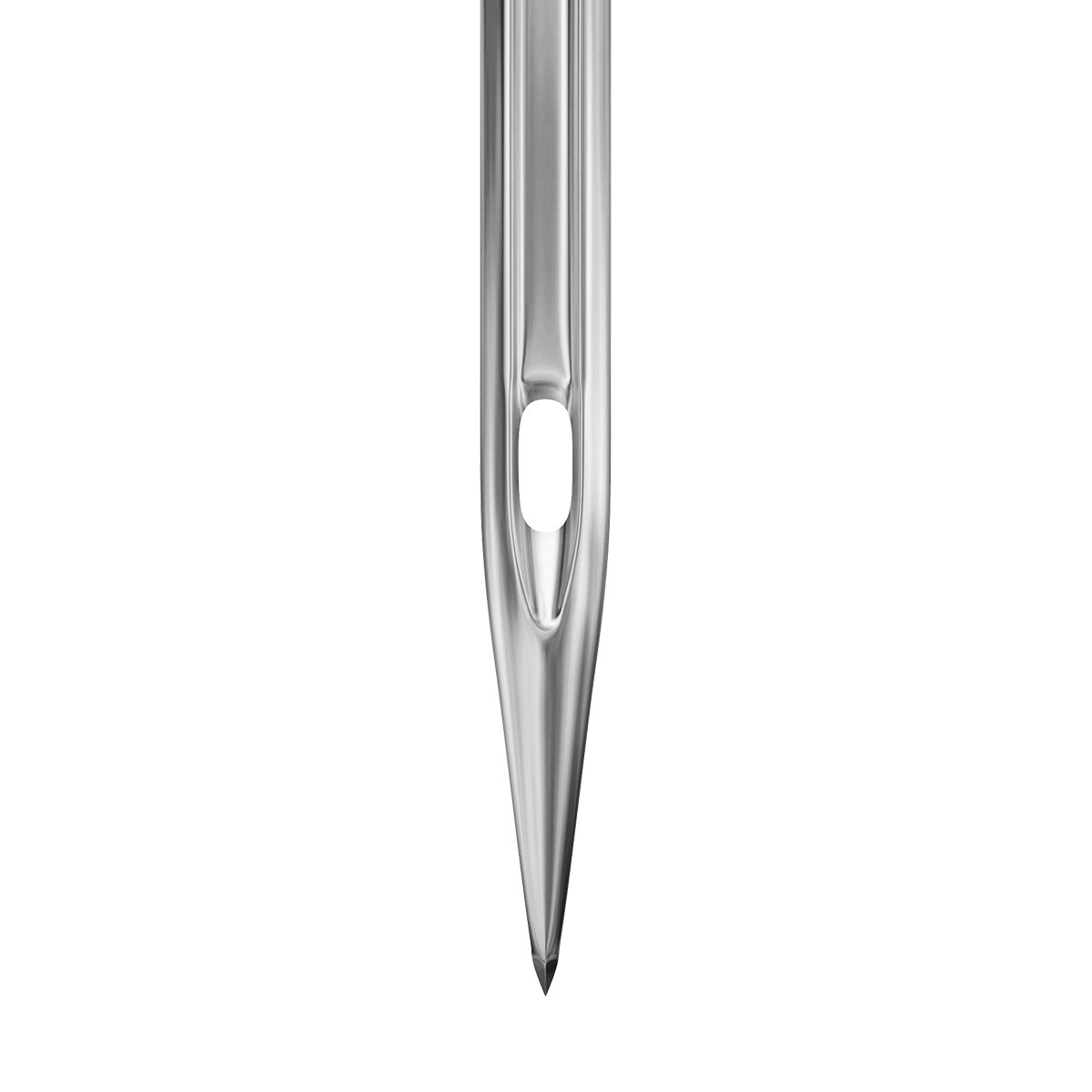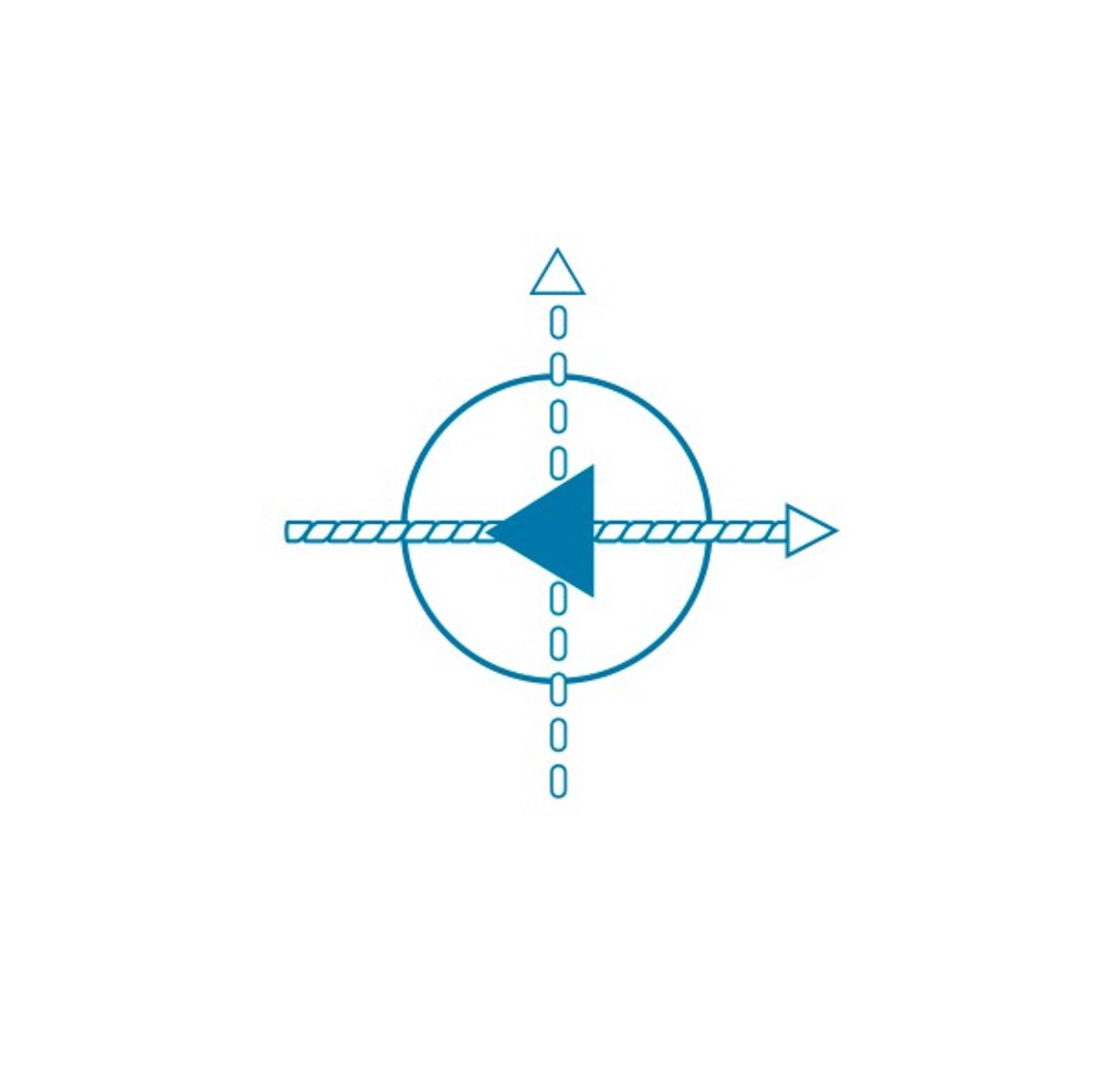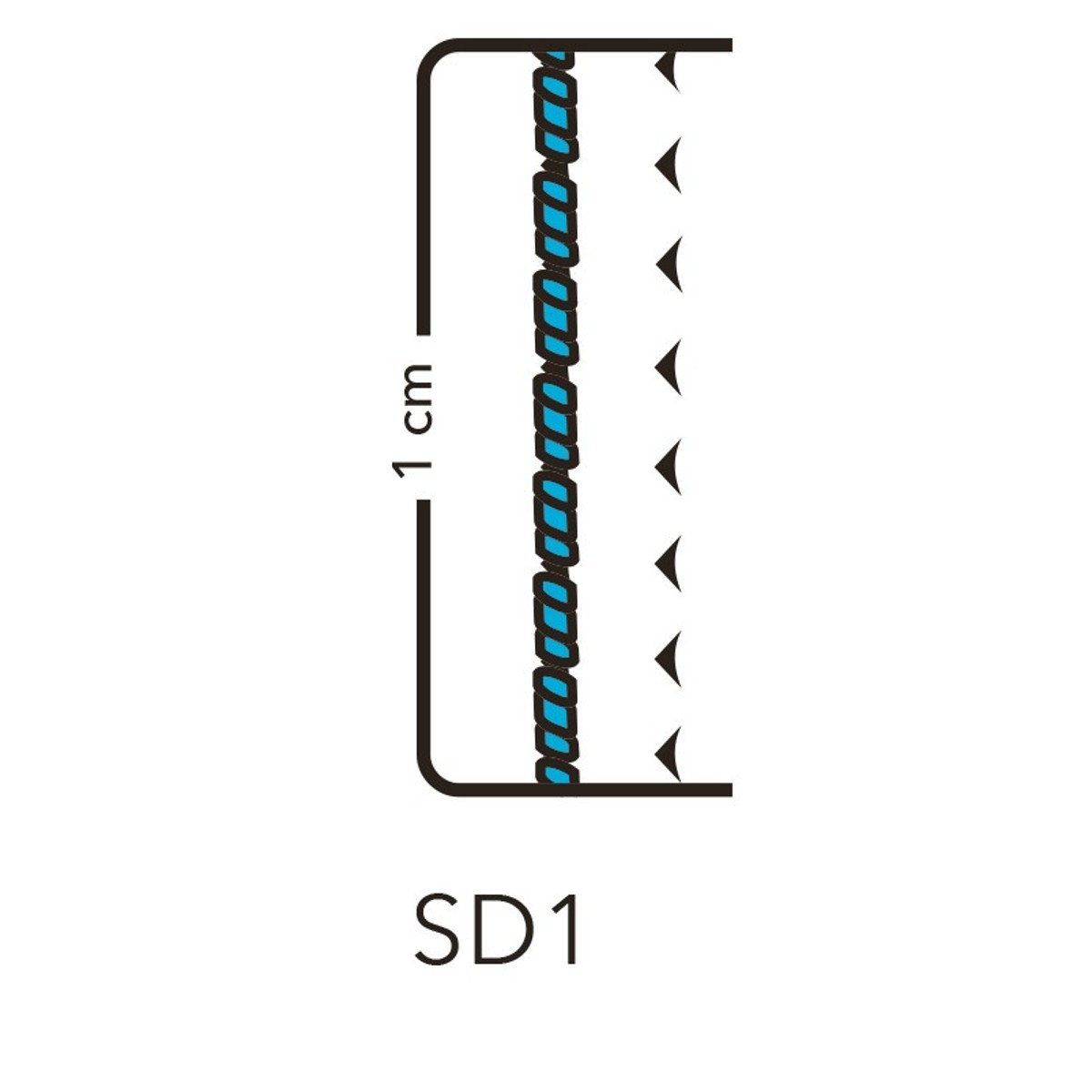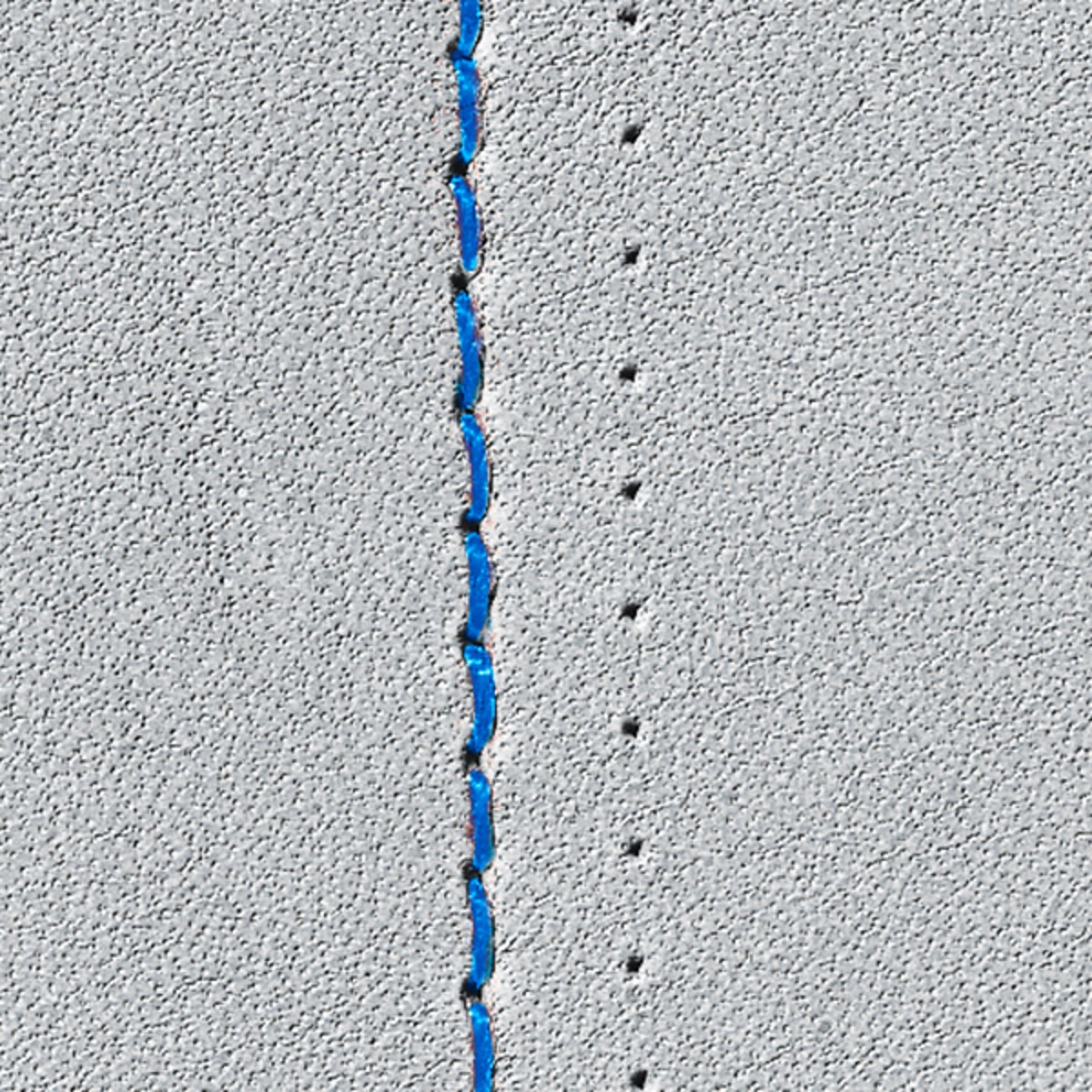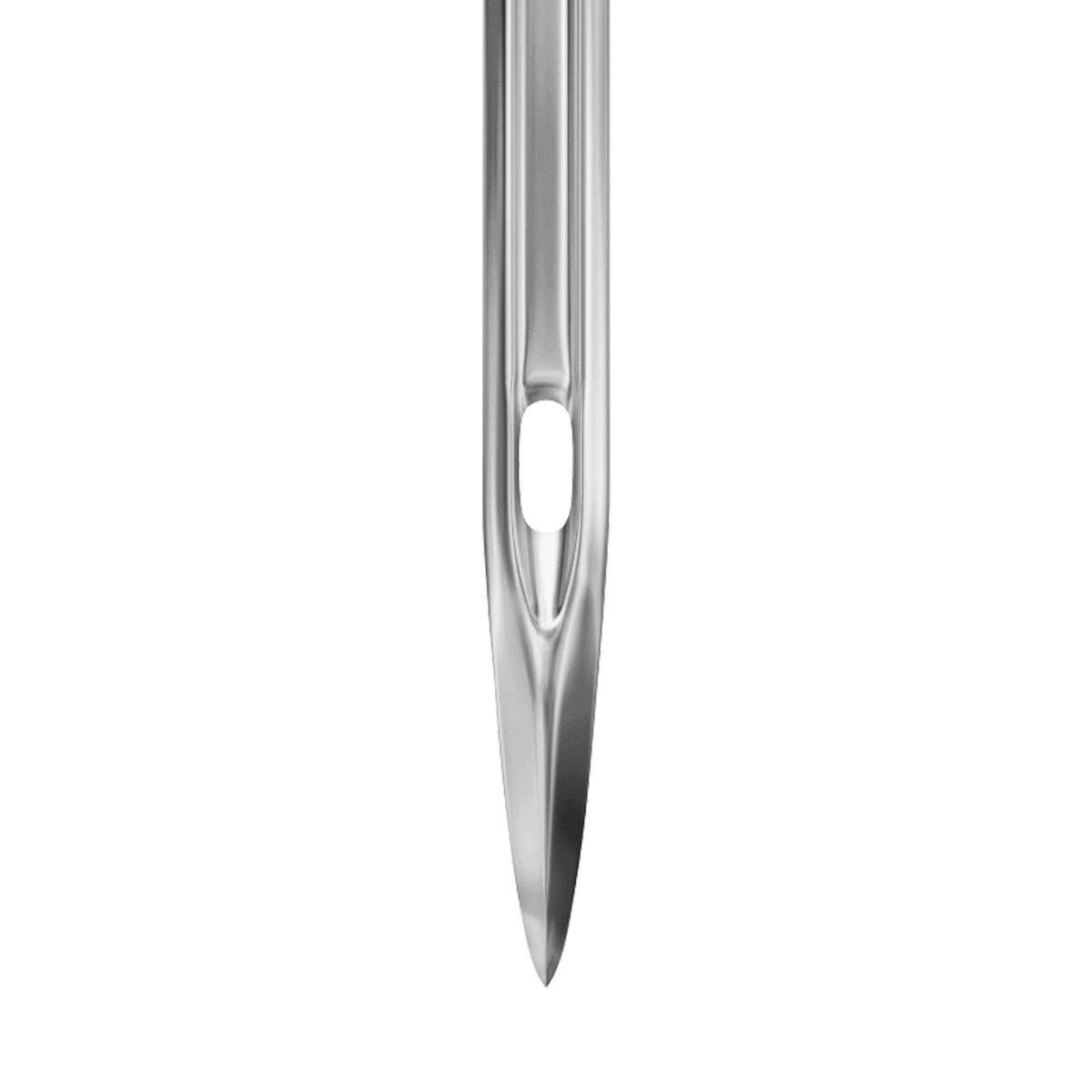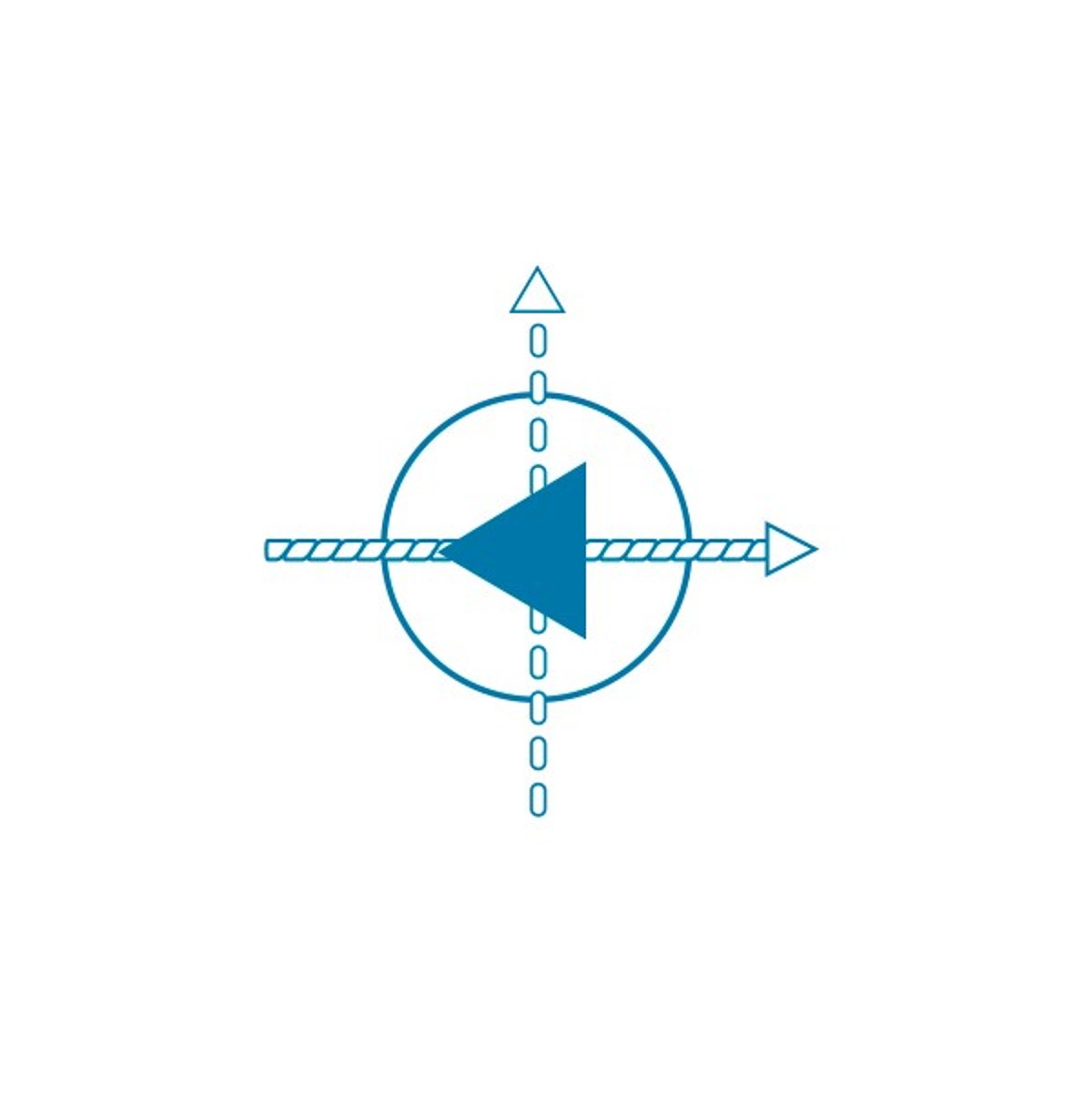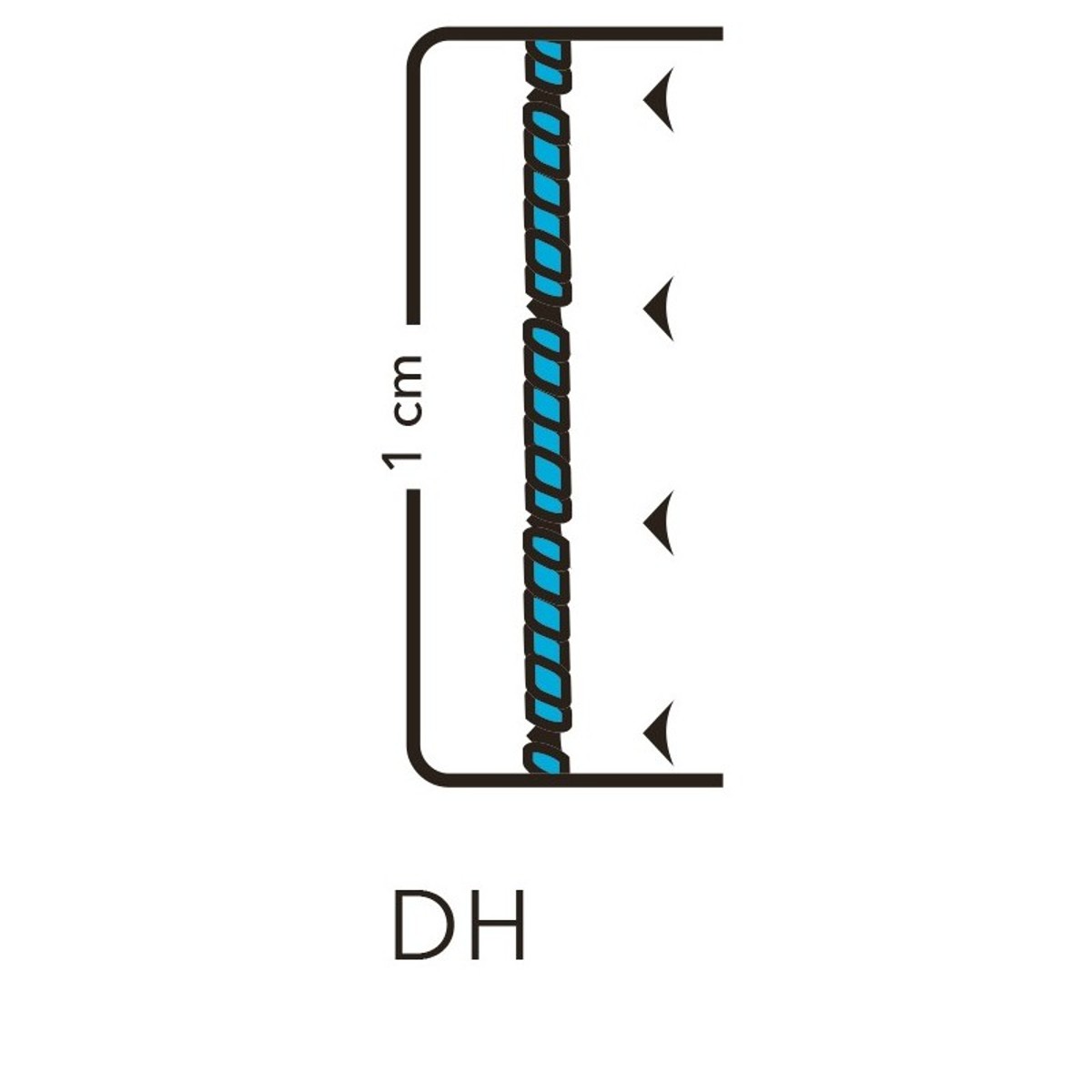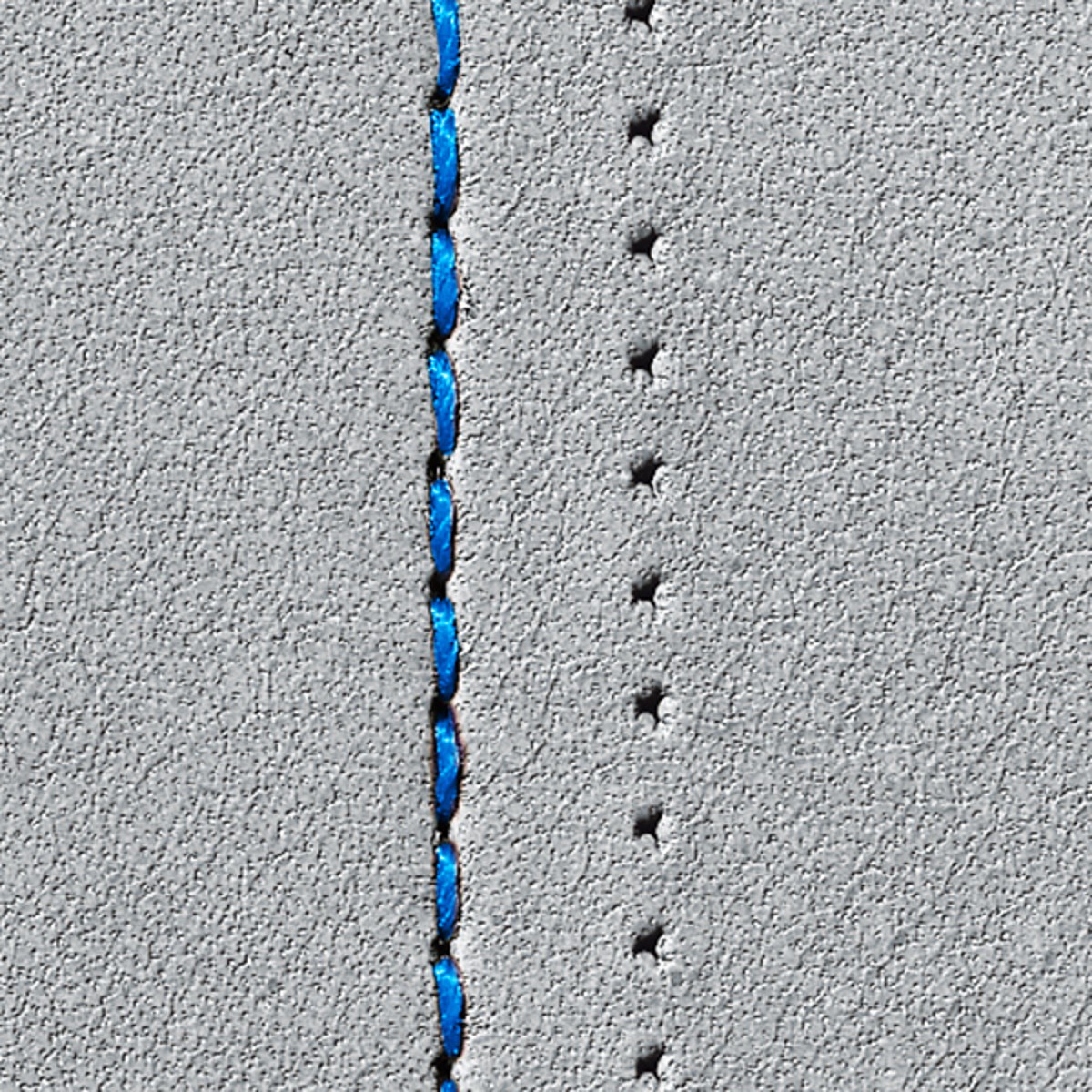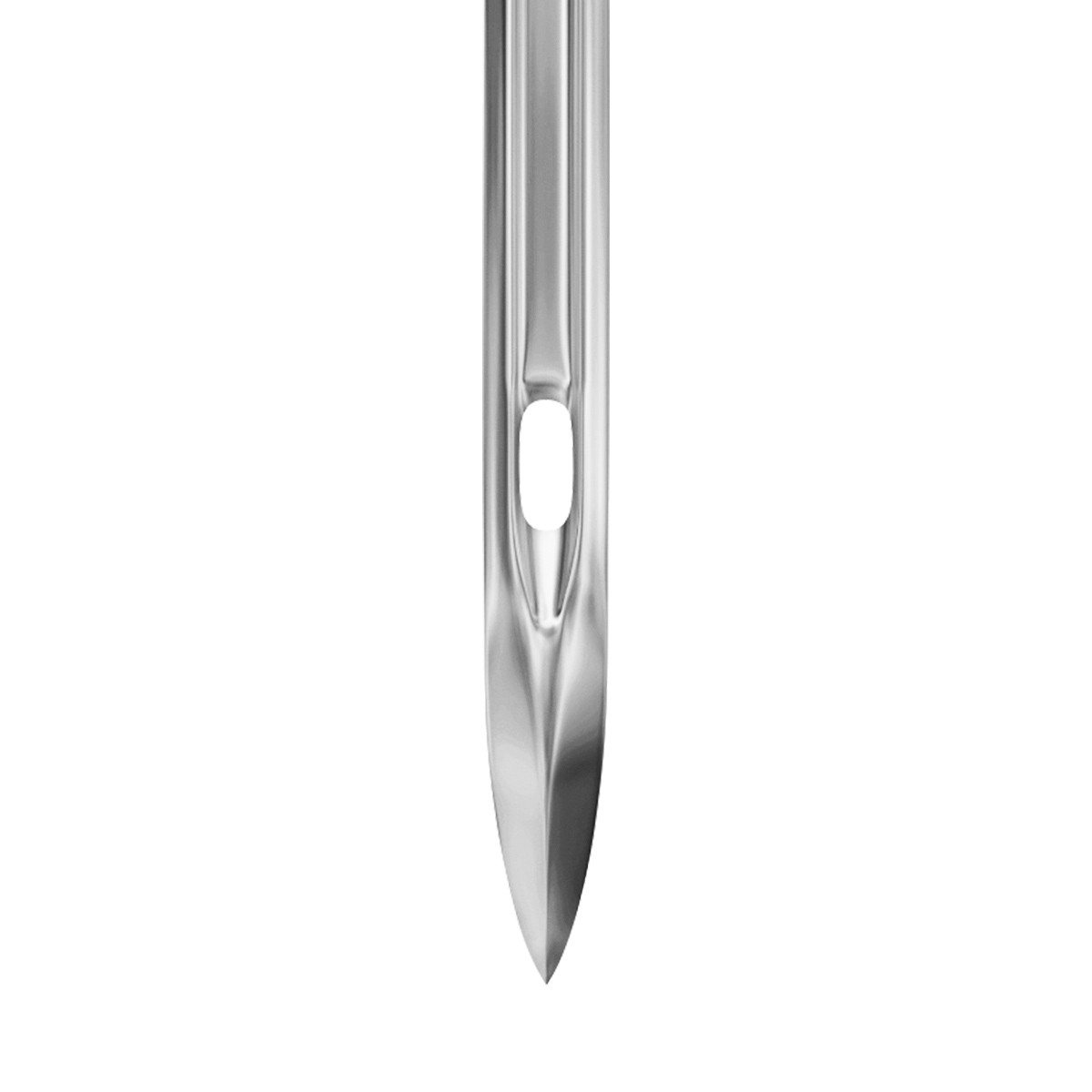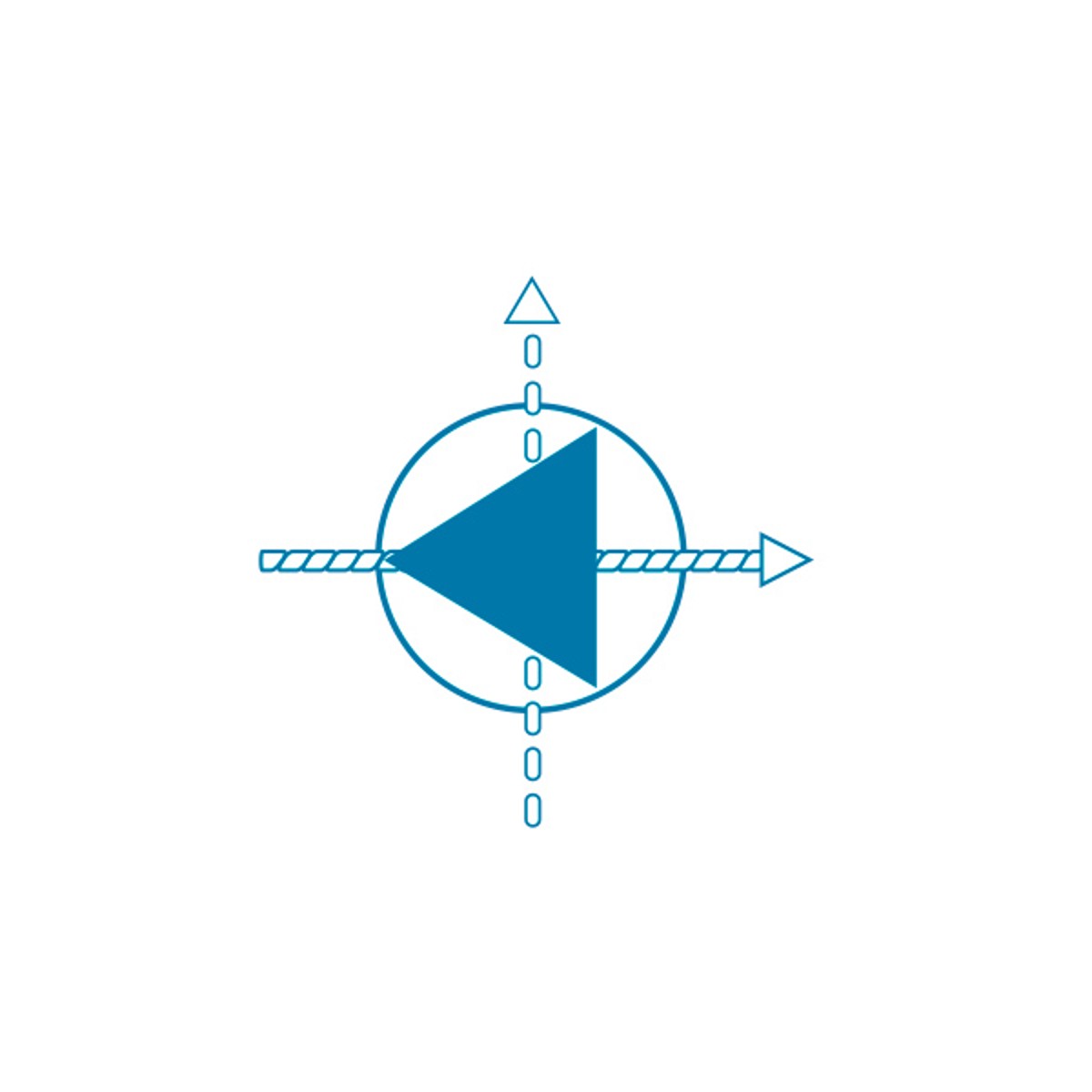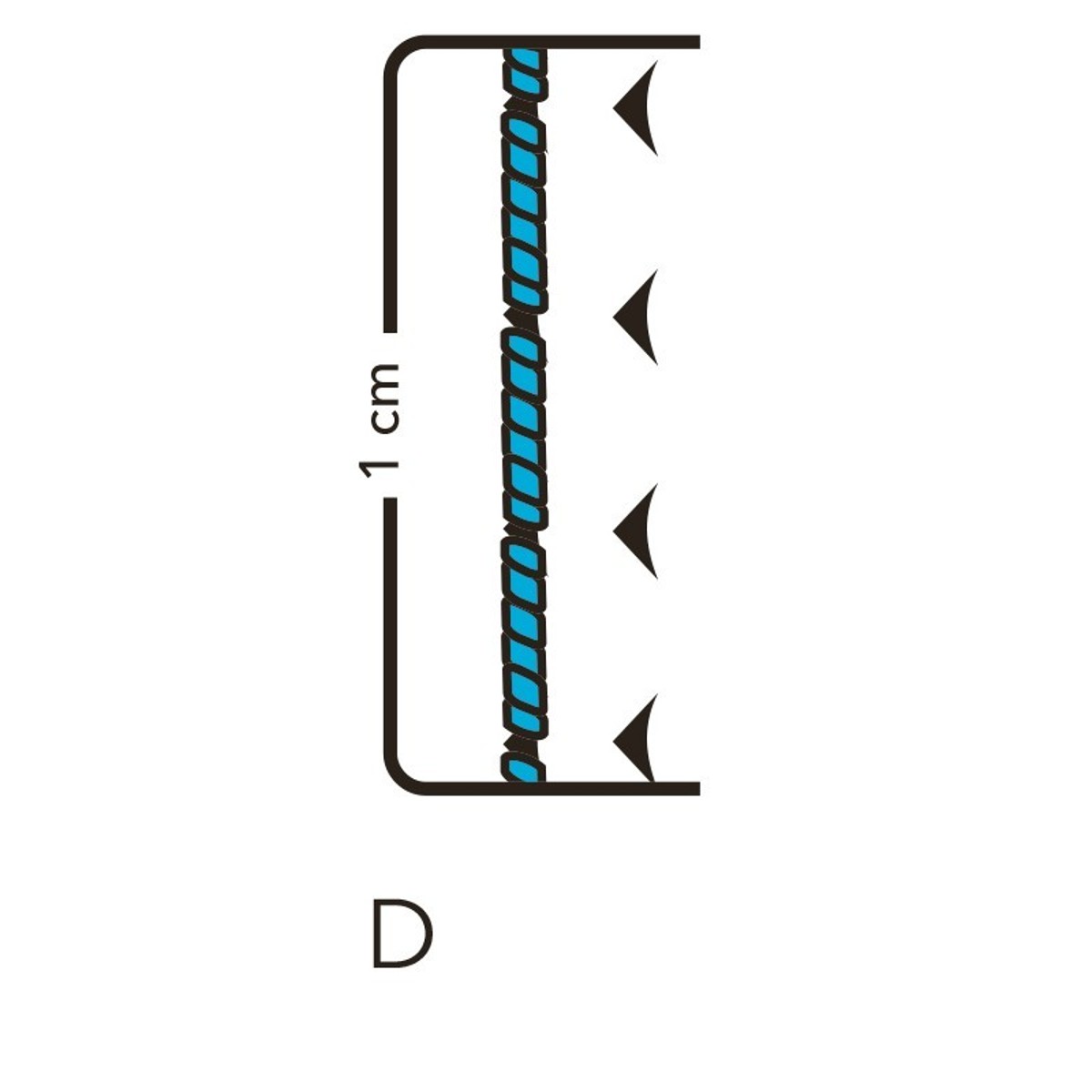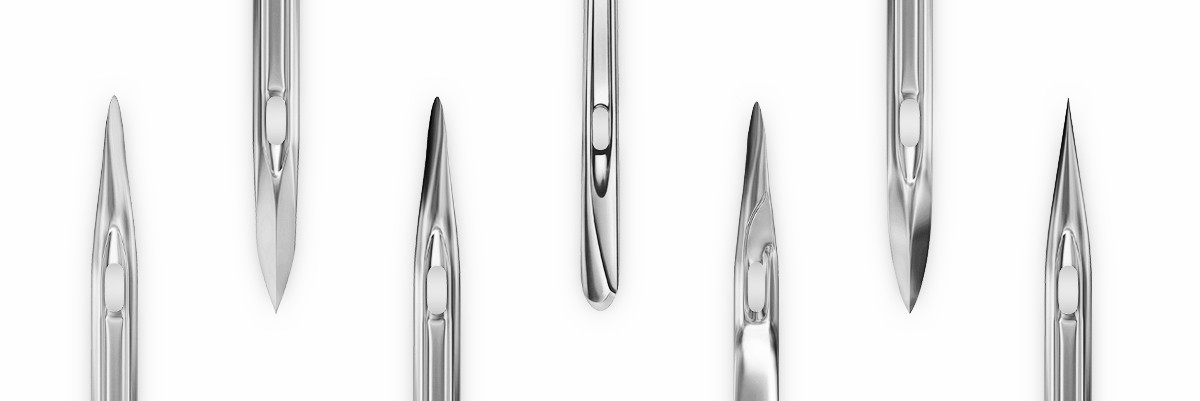
Cutting points - needles for stitching leather and other materials
For the sewing of leather and similar materials (thick card, sheet rubber, synthetic shaft materials etc.) the needles used have points with cutting edges. Because of their properties of incision, needles with cutting points penetrate the material more easily and cause less needle temperature than round points. Materials with a homogenous structure are weakened by cutting but their general strength does not deteriorate noticeably if the correct point shape is selected and the correct stitch length is maintained when sewing.
Here you will find the most commonly used cutting point shapes:
Round points essentially have the function of gently displacing material threads. The demand for a special stitch position is not necessarily made here, but damage-free sewing is in the foreground.
This is different when using cutting points. The cutting angle of a cutting point needle, together with the interlacing direction of the upper and lower threads, determines the respective stitch position in the seam. For example, the "LR" point (reverse twist point) is often used for decorative seams, as the 45° incision angle creates a stitch position that is slightly inclined to the left. The cutting angle also allows for a greater stitch density, which influences the strength of the seam.
When sewing textile materials, the selection of a special round point is determined by the material and the processing technique. The choice of a special cutting point, on the other hand (cutting angle and size of the cutting effect) is significantly influenced by the following factors/questions, which must be balanced with each other:
- Material quality/properties, e.g. softness and thickness
- Seam function, e.g. for decoration or emphasis on seam strength
- Desired seam pattern, e.g. straight stitch position or inclined stitch position
Different cutting edge shapes and positions result in clear differences in the seam and seam pattern. The incision hole and seam pattern vary depending on whether the cross-section of the cutting edge is lenticular, diamond-shaped or triangular and whether it is transverse, diagonal or in the sewing direction.
The individual point shapes are explained below. The symbols of the cutting edge cross-sections show the position of the incisions as they occur when the needles are used in machines that are threaded from the side (left-right). On machines where the needle is threaded from the front, e.g. zigzag machines, the position of the incision changes by 90° due to the rotation of the needle. The "P" point shape will then produce cuts as the "S" point shape would normally produce and vice versa.
Application examples are described for each cutting tip and the incision angle and the seam pattern are shown.
1. Narrow cross point "S" or "N CR"
This cutting point causes a lenticular incision in your material. The incision follows the direction of the seam. The result is a very straight seam.
Materials:
Suitable for all types of leather
Applications:
- Footwear
- Bags, suitcases, etc. with coarse ornamental seams
- Belts and straps
- Car seats
This point cuts in the direction of the seam and therefore permits only seams with large stitch lengths. If too dense a stitch series is used, complete perforation of the leather may occur. It is often used to produce coarse decorative seams when working with thick sewing threads and large stitch distances, because the stitches lie parallel to the seam direction. This gives the seam its “straight” effect. The sewing thread is drawn into the leather.
2. Narrow wedge point "P" or "NW", "PCL" and "PCR"
By using this cutting point, you create a lenticular incision that is made at right angles to the seam direction. The result is a seam with high strength. Needles with the narrow wedge point "PCL" have a left twist groove below the eye for hooks positioned to the right of the needle. Accordingly, "PCR" has a right twist groove below the eye for hooks positioned to the left of the needle. It is particularly useful as the lefthand needle on the twin needle lockstitch machine.
Materials:
Suitable for all types of leather
Applications:
- Footwear
- Bags, suitcases, accessories
- Car seats
Highlight:
The twist ensures that, when the needle emerges from the material being sewn, the thread is protected in the twist groove and is thus not drawn over the edge of the groove and eye or over the cutting edge and not damaged.
Seams that are subject to great strain – thinking for example of the heel seam on shoes – require very closely spaced stitches. This requirement is fulfilled by needles which cut the material crosswise to the seam direction, which allows sufficient distance to be maintained between the individual stitches to avoid the risk of stitch holes meeting one another and causing perforation of the material at these points. For this purpose, the most successful choice will always be a "P" needle and its innovative variants "PCL" and "PCR". In all three cases, these are points with a lens shaped cutting point.
The special feature of the needles "PCL" and "PCR" is the point groove below the eye twisting to the left ("PCL") or right ("PCR") side. This gives the thread more room and protects it from being squeezed over the edges of the groove or the eye, or against the cutting edge. Particularly when sewing strong, hard leather it is therefore wise to resort to a twisted point groove needle; whether to use a "PCL" or "PCR" is determined by the direction from which the hook takes the thread. In needles threaded from left to right, a "PCL" must always be used. An additional advantage of the "P" range is that the small stitch lengths result in a very fine seam with a string-of-pearls effect which – used as a visible seam – is very decorative. A high stitch density of six to eight stitches/cm is possible with no risk of perforation.
3. Reverse twist point "LR" or "R TW"
With this cutting point you achieve a lenticular incision. This is done at a 45° angle to the seam direction. The result is a decorative seam inclined slightly towards the left.
Materials:
Suitable for all types of leather
Applications:
- Clothing
- Footwear
- Bags, suitcases
- Car seats
Highlight:
Best needle for decorative seams
Especially in the manufacture of leather garments, leather shoes, bags, suitcases and belts made from leather, as well as small leather pieces (wallets etc.) stitches are usually required which have a slight diagonal inclination. This seam appearance is produced with the "LR". The incisions lie at an angle of 45° to the seam direction and produce a seam where the sewing thread is turned slightly to the left on the surface of the material. After the point shape "P" it is the one most frequently used.
Tip: For lockstitching on twin needle machines – especially for the lockstitching of coarse decorative seams – the endeavor is often to produce two identical seam profiles using a pair of "LR" needles. The desire for matching lockstitch seams to have an identical appearance is unrealistic in most cases. The reason for this is that with hooks turning clockwise, the loop at the right needle is pulled off in the sewing direction, but at the left needle it is pulled off in the opposite direction. The final placement of the sewing thread between incisions is decisively affected not only by the direction of the incisions but also by the interlacing of needle and bobbin thread. Therefore, due to the fact that the loop of the needle thread of the left seam is pulled off in the opposite direction, the needle thread is interlaced by the bobbin thread in such a way that it lies almost straight on the upper side of the material, irrespective of the direction of the incisions. Therefore, the best result is obtained by using needles cutting parallel to the seam direction like the "S" point. This will result in a straight seam appearance.
4. Wide reverse twist point "LBR"
You can use this cutting point if you want to make a lenticular incision at a 45° angle to the seam direction and beyond the diameter of the needle. The result is a raised, decorative seam inclined towards the left.
Materials:
Suitable for all types of leather
Applications:
- Clothing
- Bags, suitcases
- Upholstery
Highlight:
Recommended for decorative seams which characterize the design
There are numerous instances where clothing, suitcases, bags and upholstered furniture are enhanced by means of rustic, decorative seams where stitches lie at a slight oblique angle to the seam direction. This result can be achieved with the "LBR" point. The cutting width of this point shape cuts the material open beyond the diameter of the needle blade. If a coarse sewing thread is used, then very attractive, so-called designed decorative seams can be achieved.
5. Twist point "LL" or "TW" and "LLCR"
When using this point shape, you achieve a lenticular incision with a 135° angle to the seam direction. The result is a slightly recessed, straight seam.
Materials:
Suitable for all types of leather
Applications:
- Footwear
- Bags, suitcases
- Particularly suitable for shoe repairs
Highlight:
For the manufacture of footwear, in order to achieve the same seam appearance with the hook positioned to the left of the needle as achieved using the "LR" point in combination with a hook positioned to the right of the needle.
This point also cuts at a diagonal to the seam direction. The incisions are the exact opposite of those of the point shape "LR". Using this point on machines with the needle threaded from the left, seams can be achieved in which the sewing thread between the incisions, while it is very straight, is not very regular. Furthermore, the incisions are rarely completely filled by the sewing thread. This point shape is used most often when raw edges of material pieces must be neatened using zig-zag machines (threaded from the front). The "LLCR" needle also has a right twisted point groove (CR). Because of the cutting angle the leather is less easily perforated than if a narrow cross point S is used. Consequently, the stitch density can be slightly increased to 5 – 6 stitches/cm. This makes a stronger seam. As opposed to the S point, the sewing thread lies slightly on the surface of the material.
6. Diamond point "DI" or "DIA"
If you are using the "DI" point, you will obtain a rhombic incision. The centered incision is made in the seam direction. The seam appearance corresponds to that of the narrow cross point "S", however, the four cutting edges of the "DI" point allow easier penetration of heavy, hard materials. The result is a very straight, recessed seam.
Materials:
Suitable for hard, dry leather
Applications:
- Footwear
- Bags, suitcases
Highlights:
- Absolutely precise and tidy seam appearance
- Precise stitch appearance
- No needle deflection
When hard, dry, thick types of leather must be sewn and there are comparable requirements for seam appearance, the use of the "DI" point is recommended. This cutting point shape, in contrast to the lens shaped "S" point, has a rhombic point which gives even greater cutting effect. It produces a centered and exact incision into the material and an absolutely neat and accurate seam appearance.
7. Reverse twist spear point "VR" or "R TW SP"
The incision angle of this cutting point with rhombic incision is 45° to the seam direction. The result is a seam slightly inclined to the left. It has a better cutting effect than the comparable reverse twist point "LR".
Materials:
Suitable for hard, dry leather
Applications:
- Footwear
- Bags, suitcases
Highlight:
Due to the four cutting edges,
- a correct stitch appearance and
- no needle deflection
is achieved.
Seams that are produced with this point shape largely correspond to those achieved with the point shape "LR". However, it penetrates the material more easily – i.e. it encounters less resistance – and also has better centering properties than the "LR" point with lens shaped cross section. Because of the better cutting properties, the "VR" point should be used for sewing harder types of leather.
8. Round point with small triangular tip "SD1" or "TRI TIP"
This round point with a very small triangular incision cuts approx. 10 % of the stitch hole, 90 % is displaced by the conical round point "R". The result is a straight seam and a tidy seam appearance. The incision is smaller than with a cutting point.
Materials:
- Fine leather
- Clothing made of leather and imitation leather
- Thin, synthetic leather materials
- Materials coated with PVC/PUR, e.g. tarpaulins, tents, coated table cloths
Applications:
- Leather
- Plastic
- Hard fibers
- Films
Highlights:
- The stitch appearance remains the same in all sewing directions when using multi-directional sewing techniques (programmable sewing machines).
- Very gentle cut of the material
For precision sewing of fine leather or faux leather, plastic foils and other “difficult materials”, the "SD1" – round point with small triangular tip – was developed. This point shape constitutes a compromise between a cutting point and a round point (displacement point). The small triangular cutting point at the extreme tip easily pierces the material (around 10 % to 15 %); the remaining 90 % is then opened up using the displacement principle of the round points. The result is a more accurate stitch placement and lower needle deflection than with use of a round point, plus a smaller incision than with use of a cutting point; in short, a straight, neat seam. A stitch density of around six to eight stitches/centimeter can be used.
9. Half triangular point "DH"
This cutting point achieves a triangular incision that is smaller than that of the "D" point. This creates a straight seam.
Materials:
- Composites, e.g. laminated material together with plastic sections
- Plastic sections
- Hard pressboard
- Tarpaulin material
- Tent canvas
Applications:
- Upholstery
- Vehicle interieur
- Tarpaulins, tents, awnings
For sewing bonded fabrics – e.g. laminated material and plastic profiles – and textiles of all kinds with plastic profiles, firm compressed card, heavy awning and tent fabrics, etc., SCHMETZ developed the "DH" needle. The "DH" point, as its name might suggest, has a less cutting effect than the "D" point described later but more cutting effect than the SD1 point. Here too, the symmetrical point shape ensures that stitching is well centered so that a straight, neat seam is formed. Typical areas of application are upholstery manufacture, manufacture of interiors for all types of motor vehicles (especially car and airplane seats), and the manufacture of heavy awnings, tents and covers.
10. Triangular point "D" or "TRI"
With this cutting point you achieve a triangular incision. The result is a straight seam.
Materials:
Suitable for hard, dry leather
Applications:
- Footwear, especially for heavy footwear (e.g. safety footwear)
- Upholstery
- Plastics, cardboard, heavy pressboard, paper
Highlights:
- Best cutting effect of all cutting points
- Excellent cutting effect almost to the full diameter of the needle
For good and economical sewing of very hard, dry types of leather – for example in production of heavy boots or products involving plastics, thick compressed cardboard or coated material – needles of the "D" point shape are used. Needles with "D" points make one of the most effective incisions of all the cutting point needles. In addition, the symmetrical point shape ensures that the needle is almost never deflected, so that the seam is straight because well centered. The star shaped stitch hole produced by the "D" point is unfortunately never quite filled by the sewing thread, so that a very large stitch hole remains visible in the material. The effective incision properties of "DH" and "D" points can lead to thread damage when bartacking at the beginning and the end of the seam.


